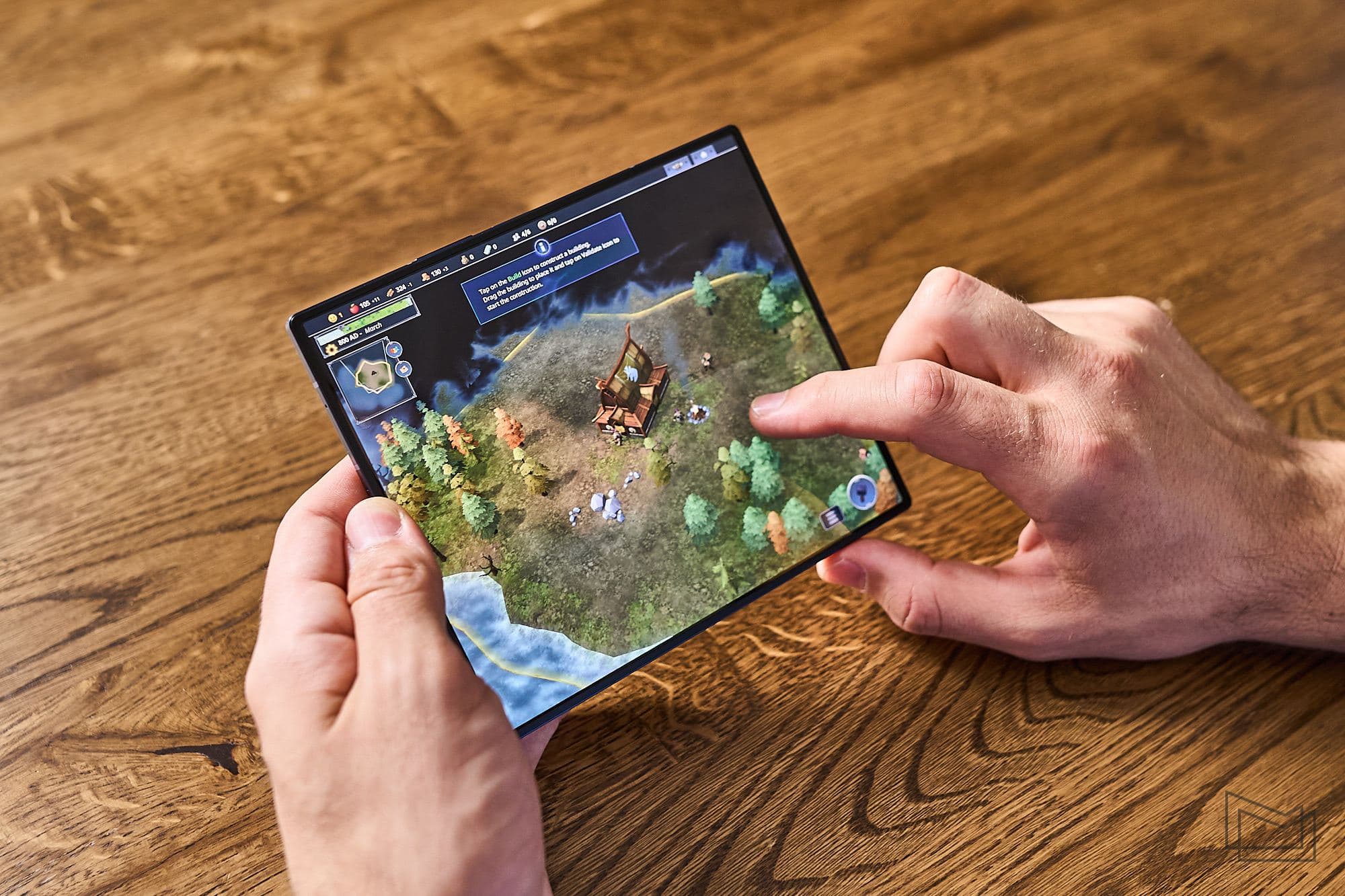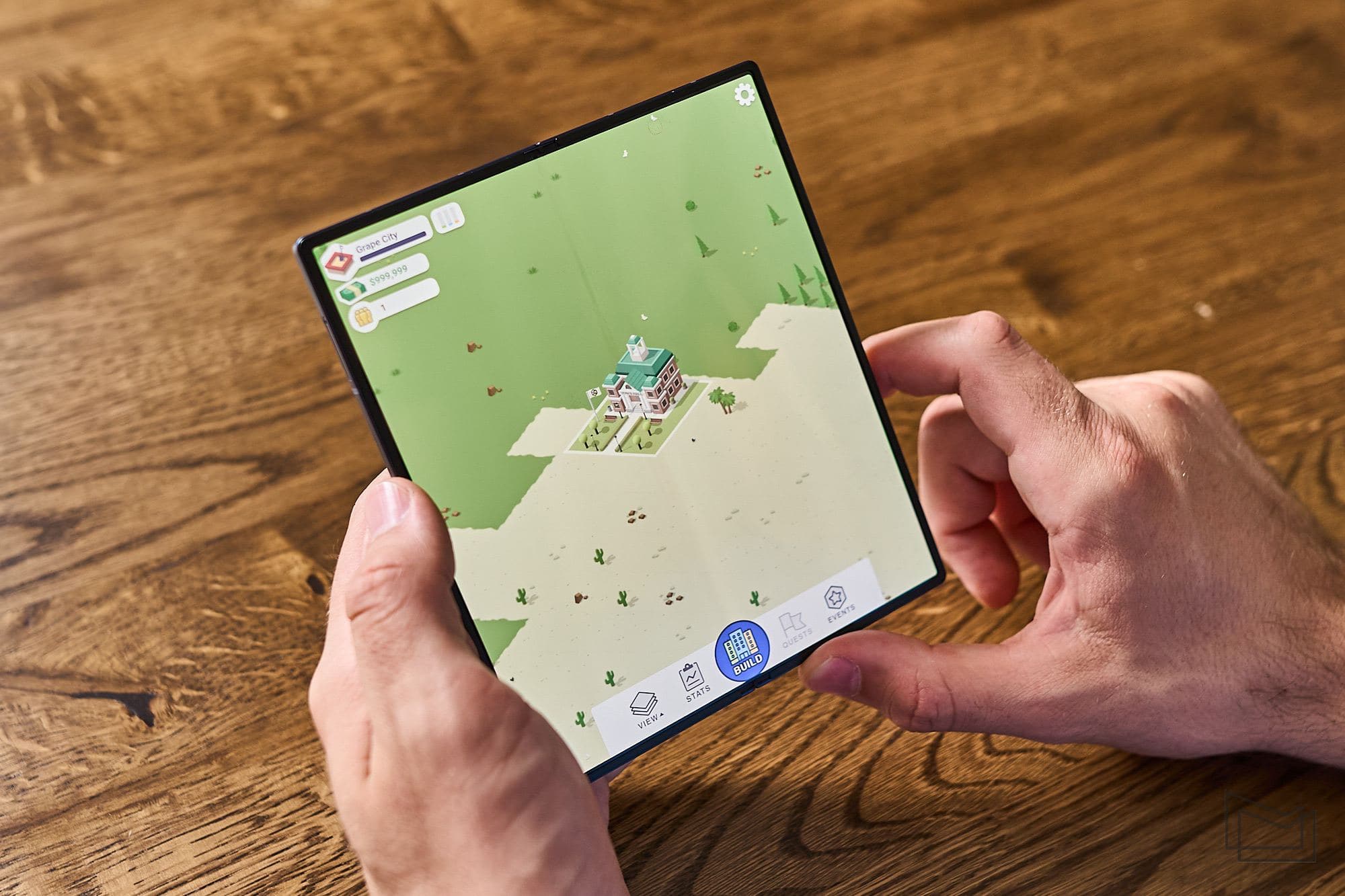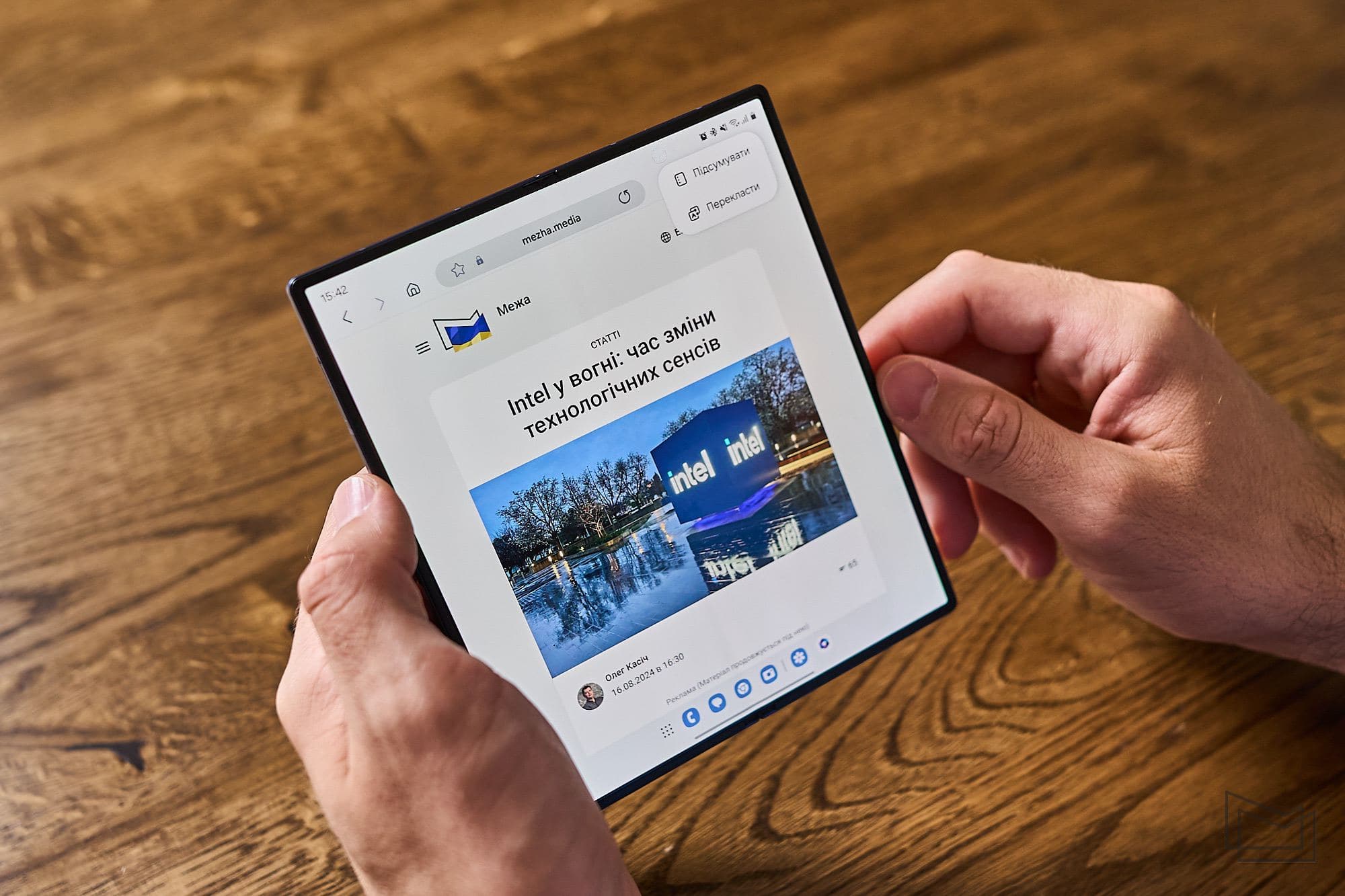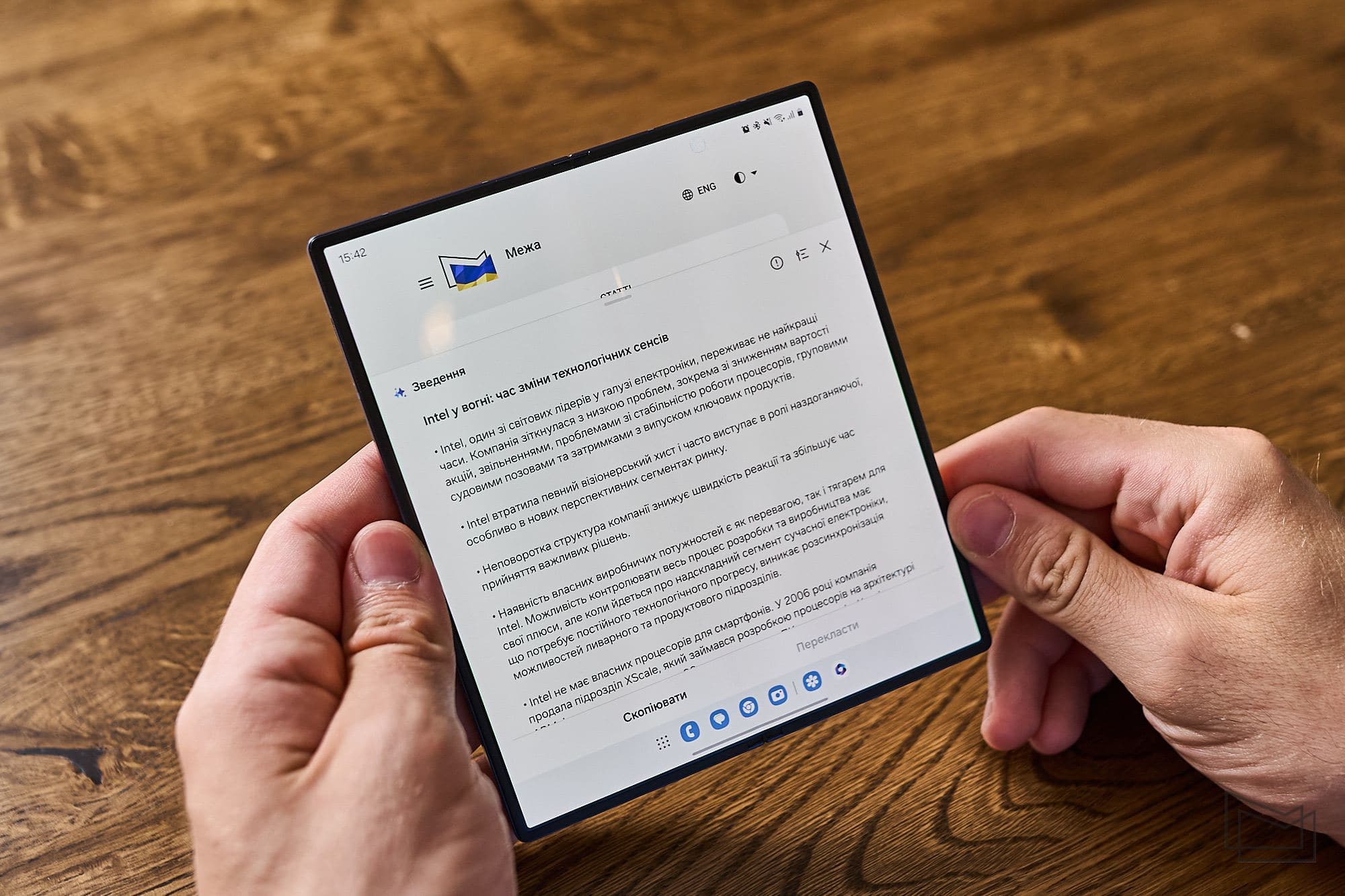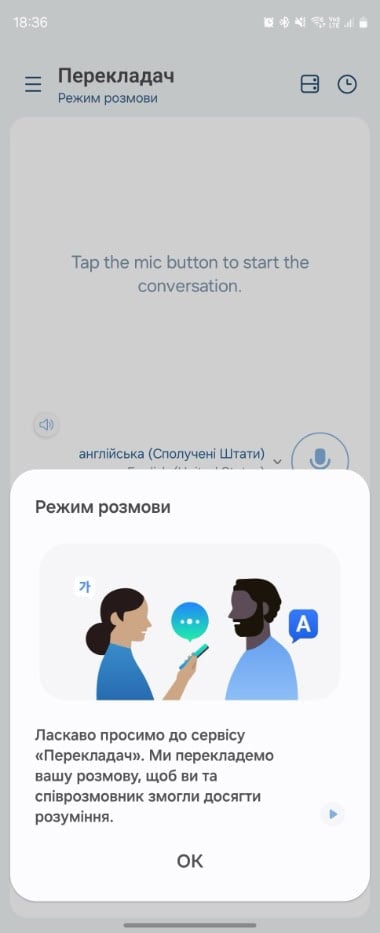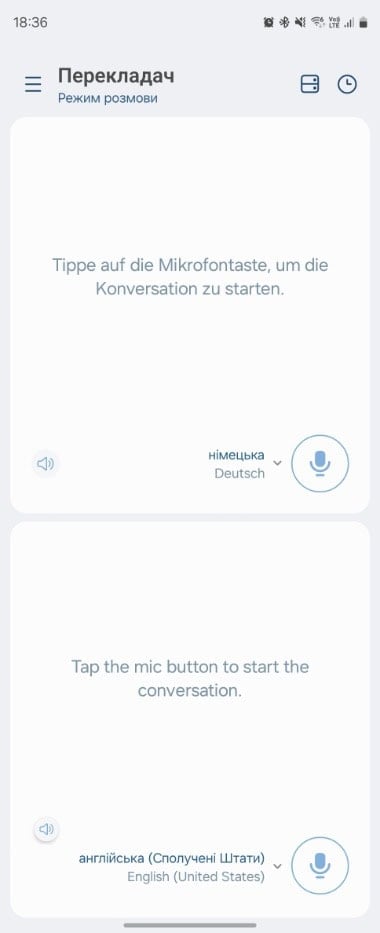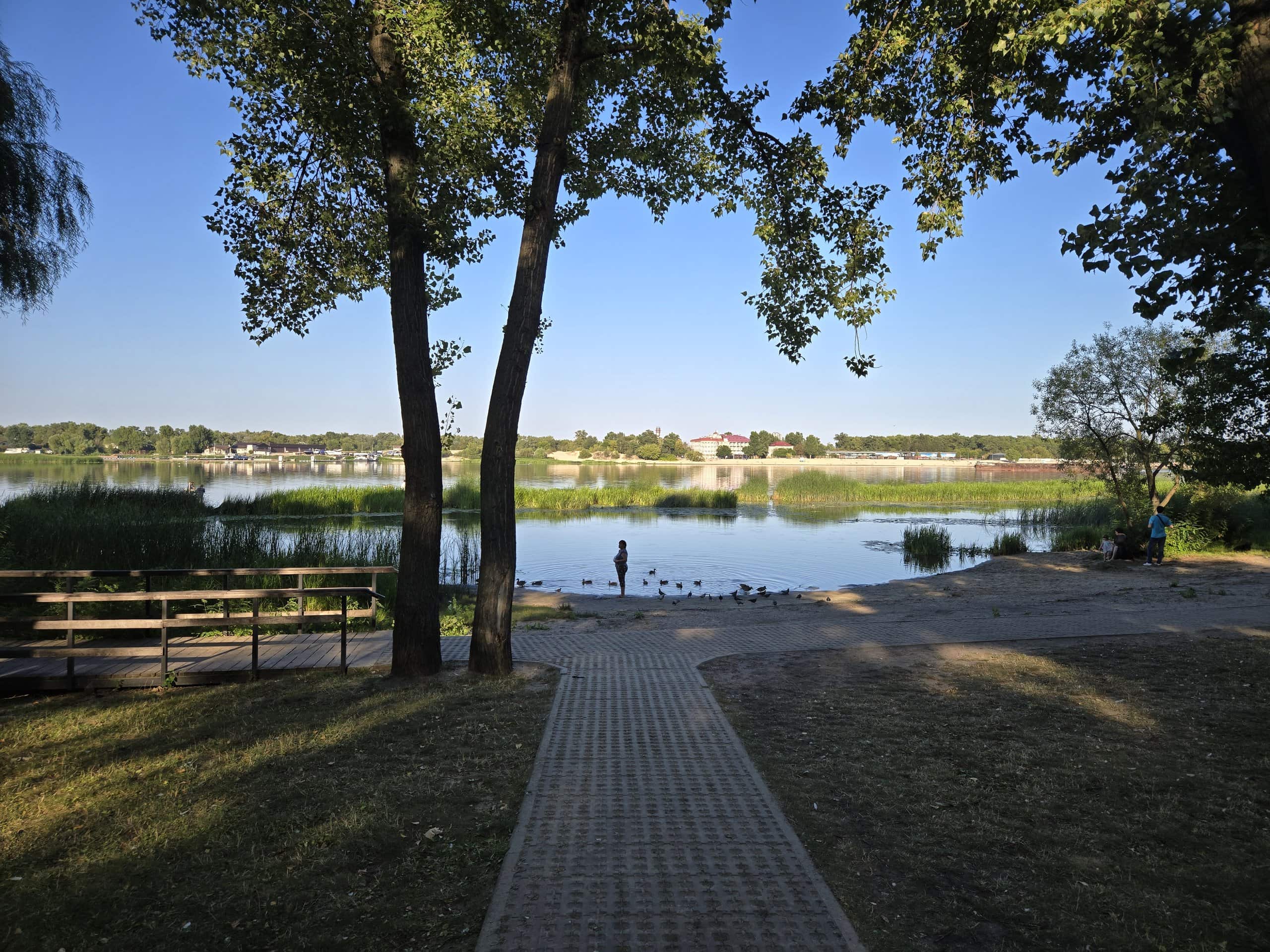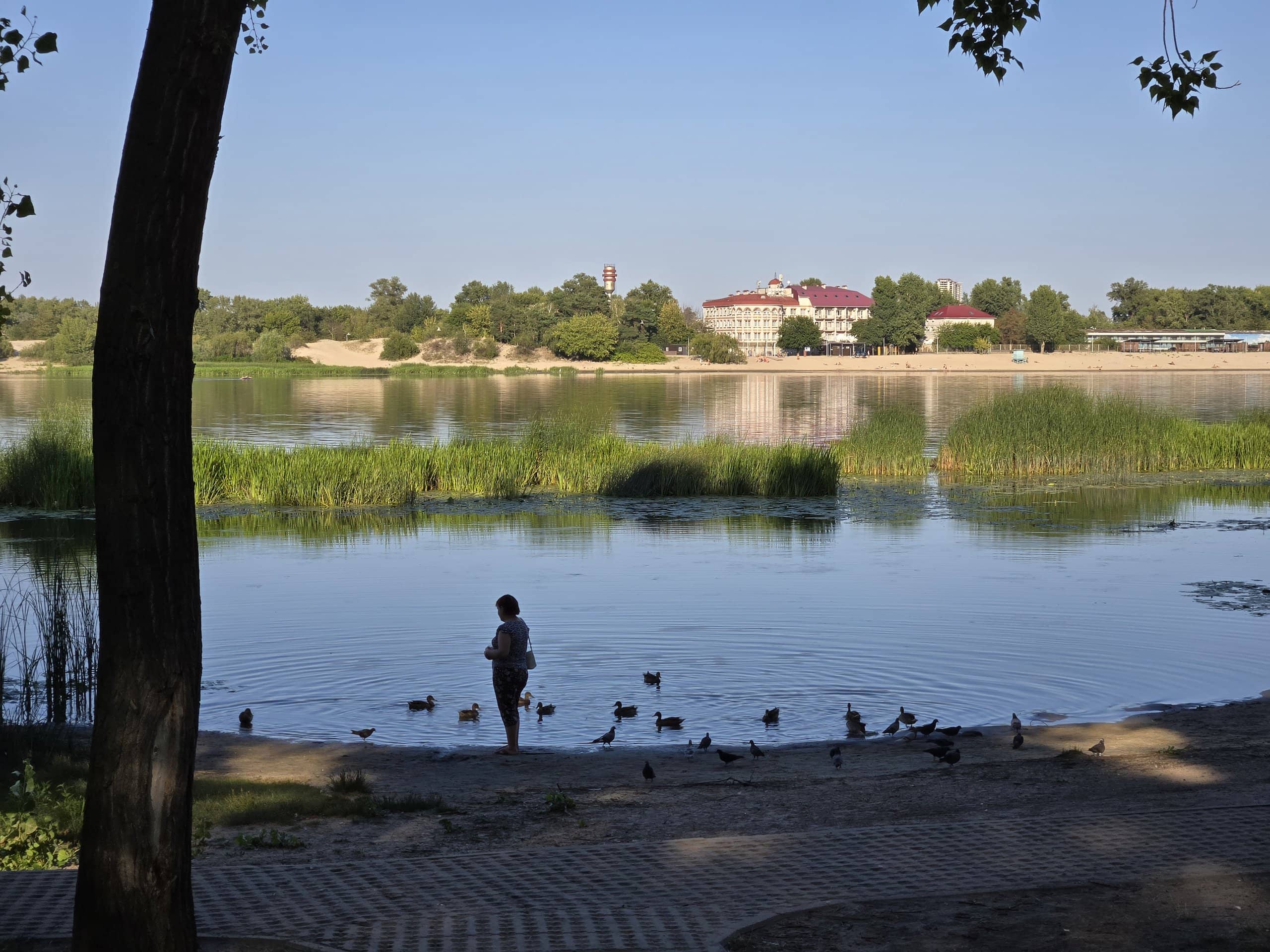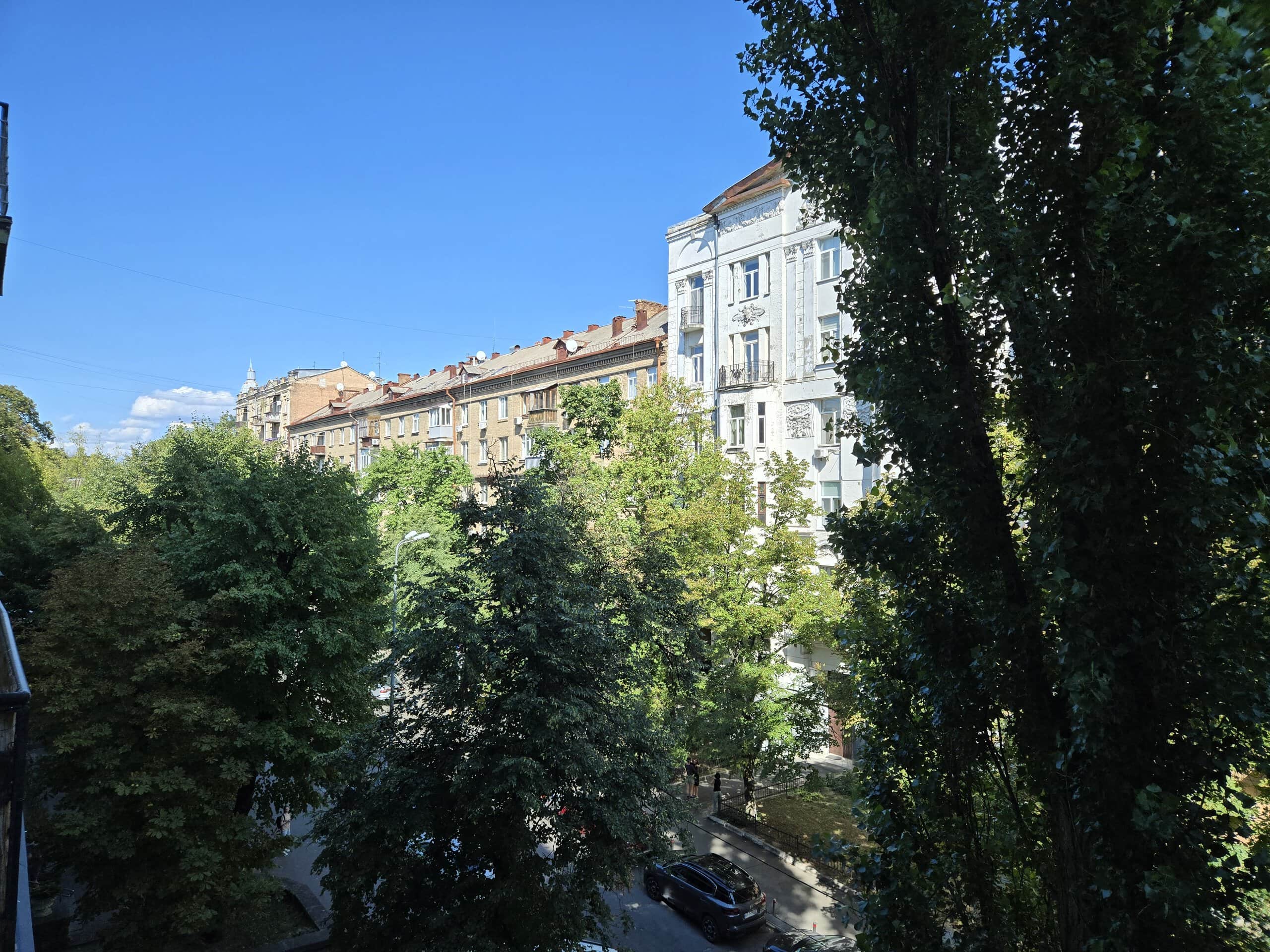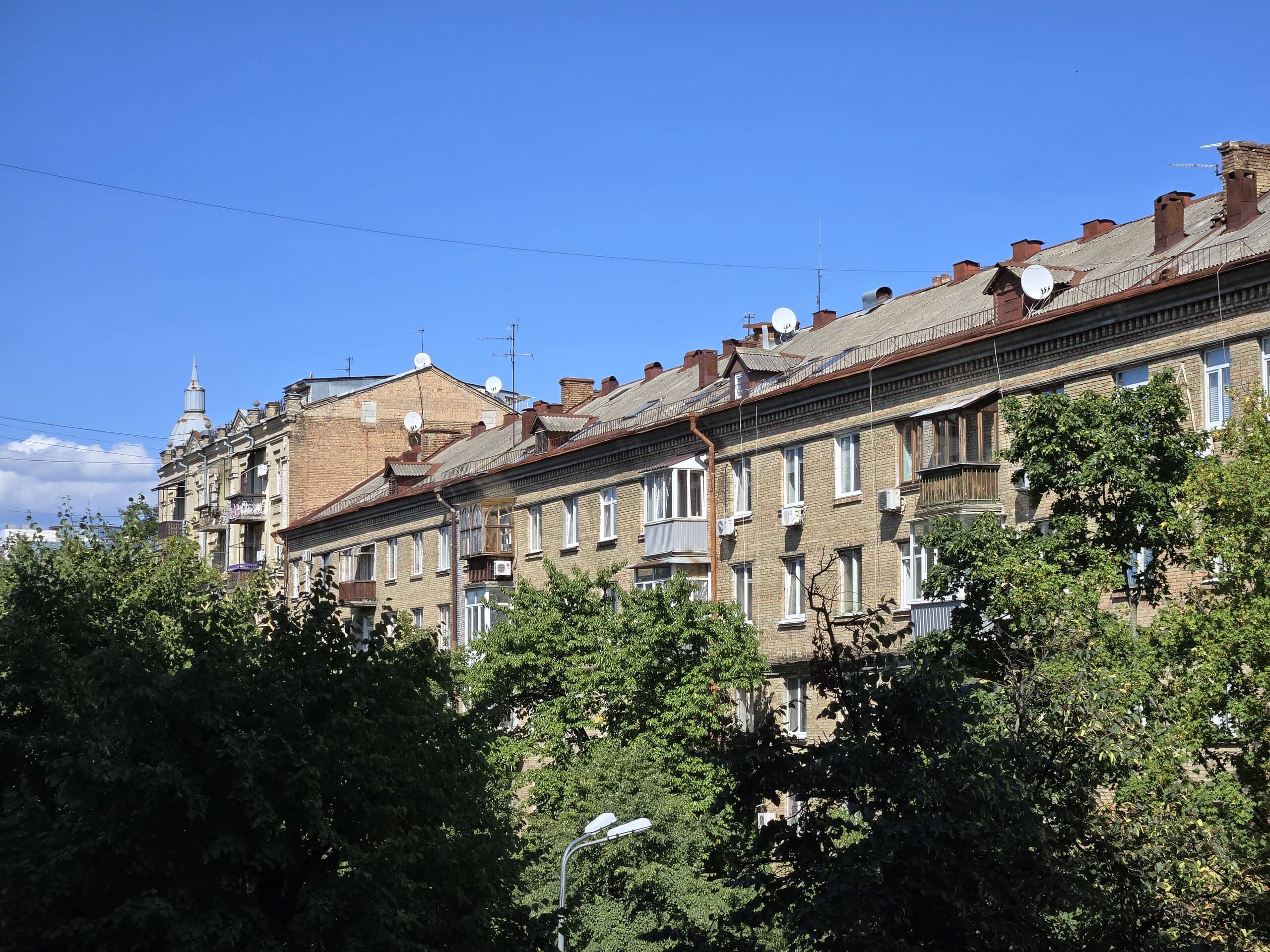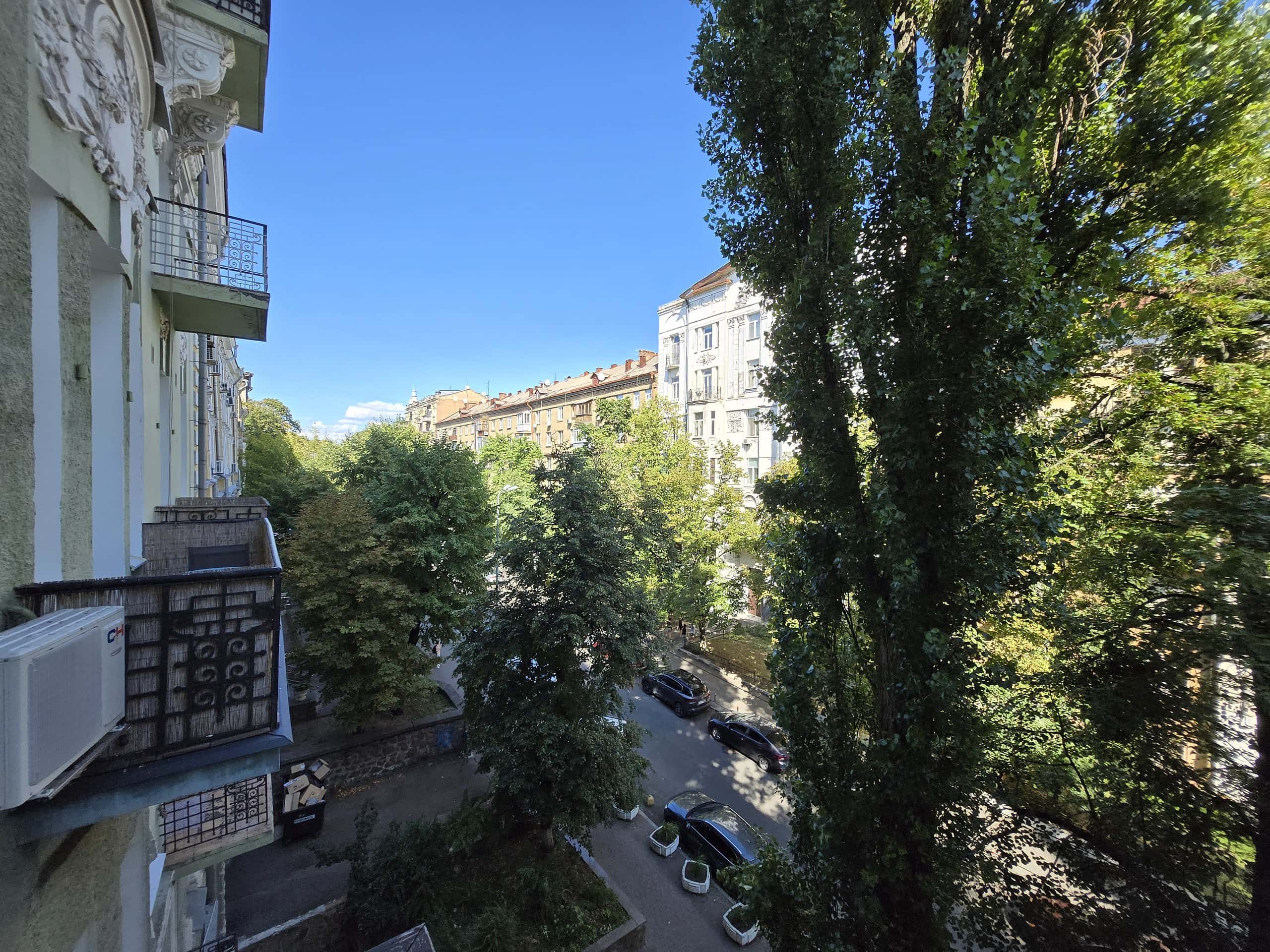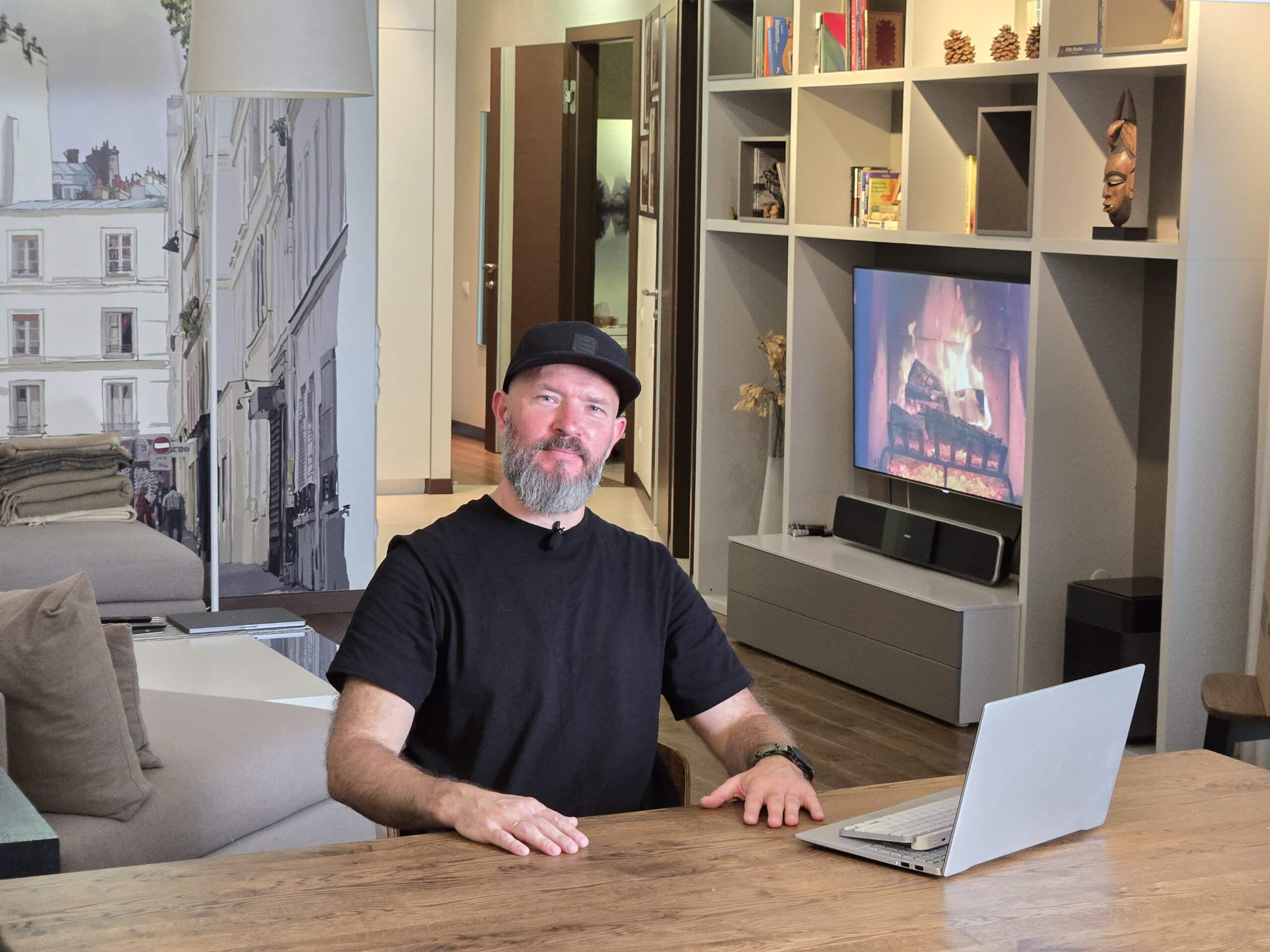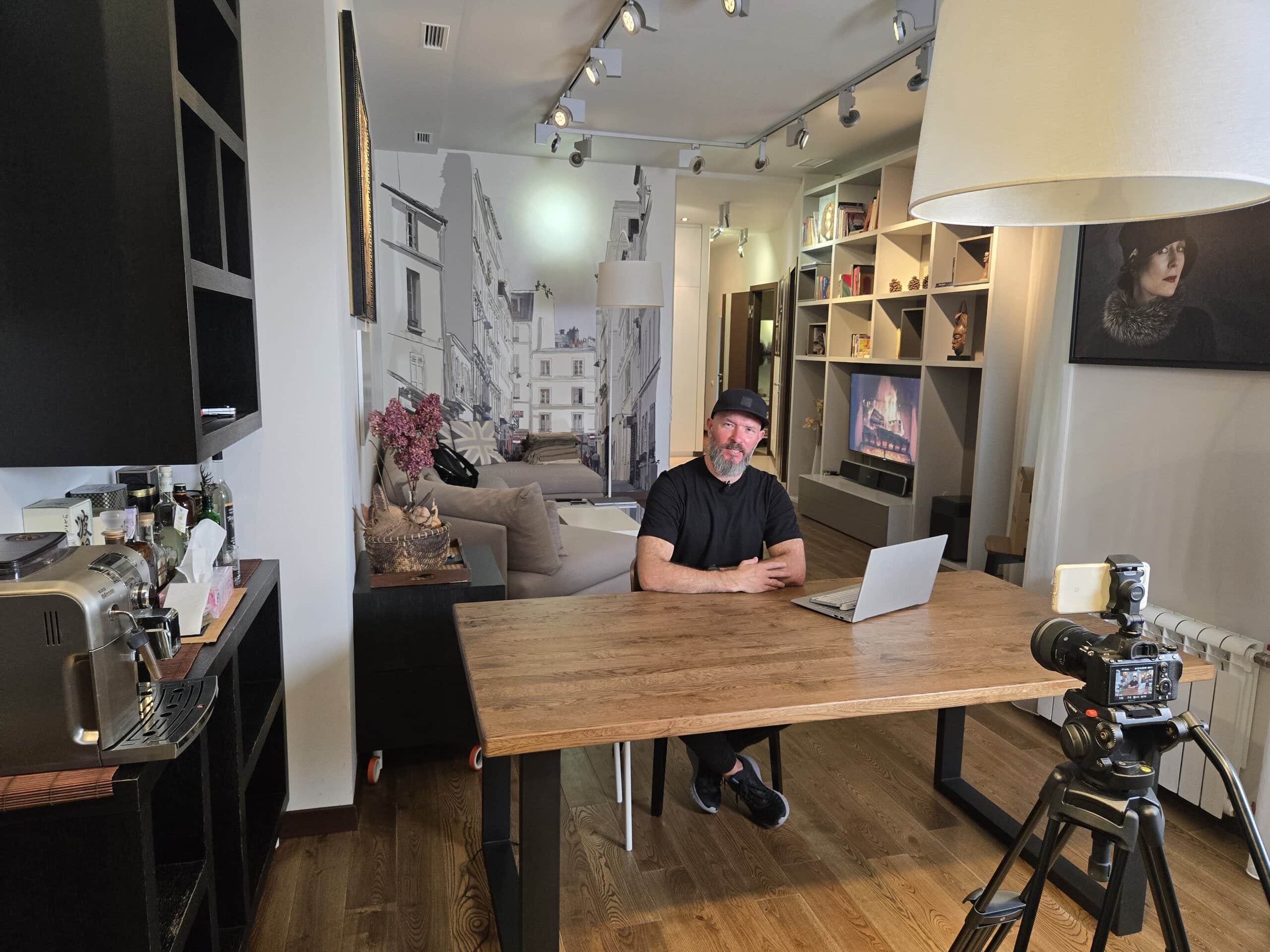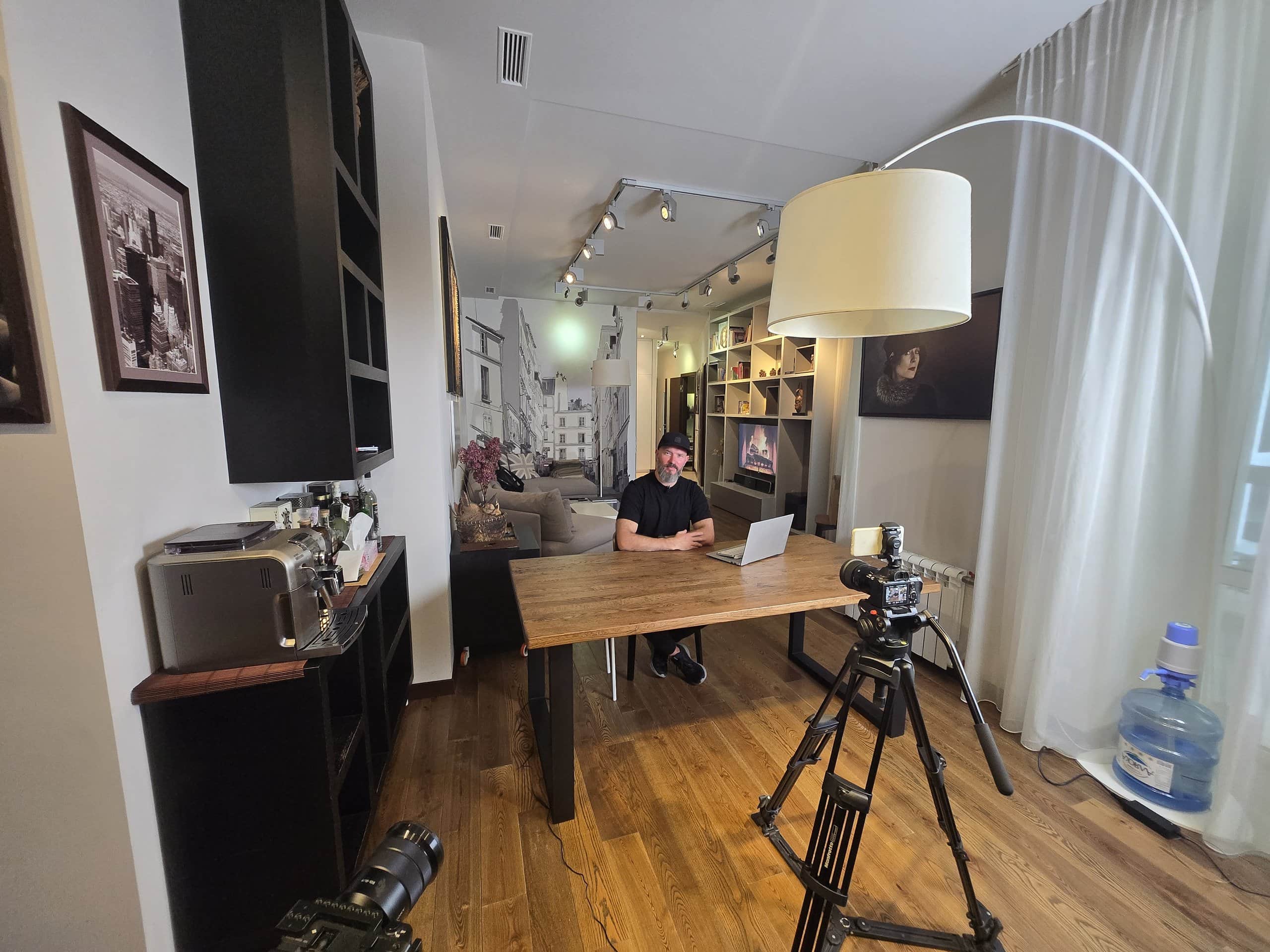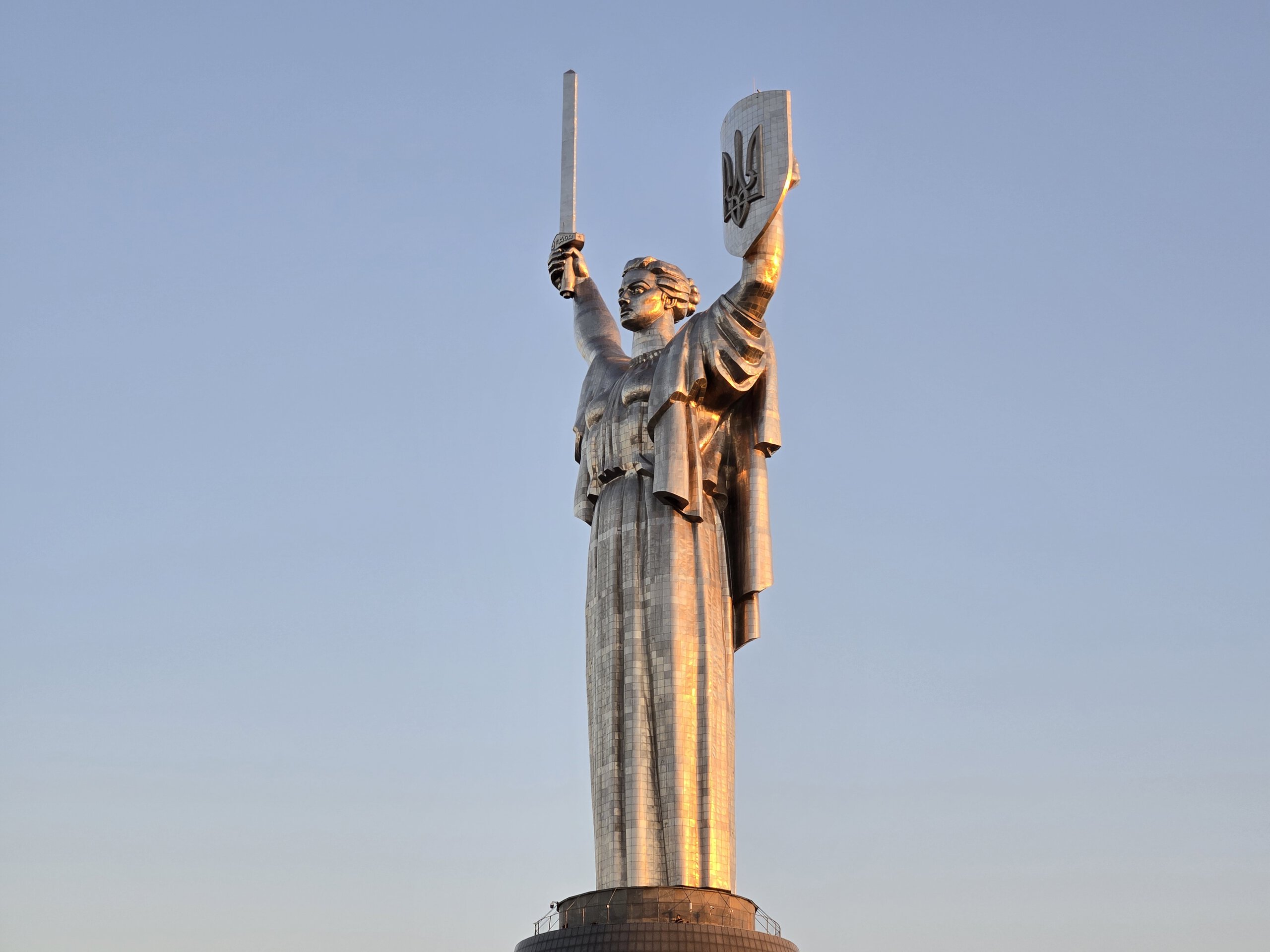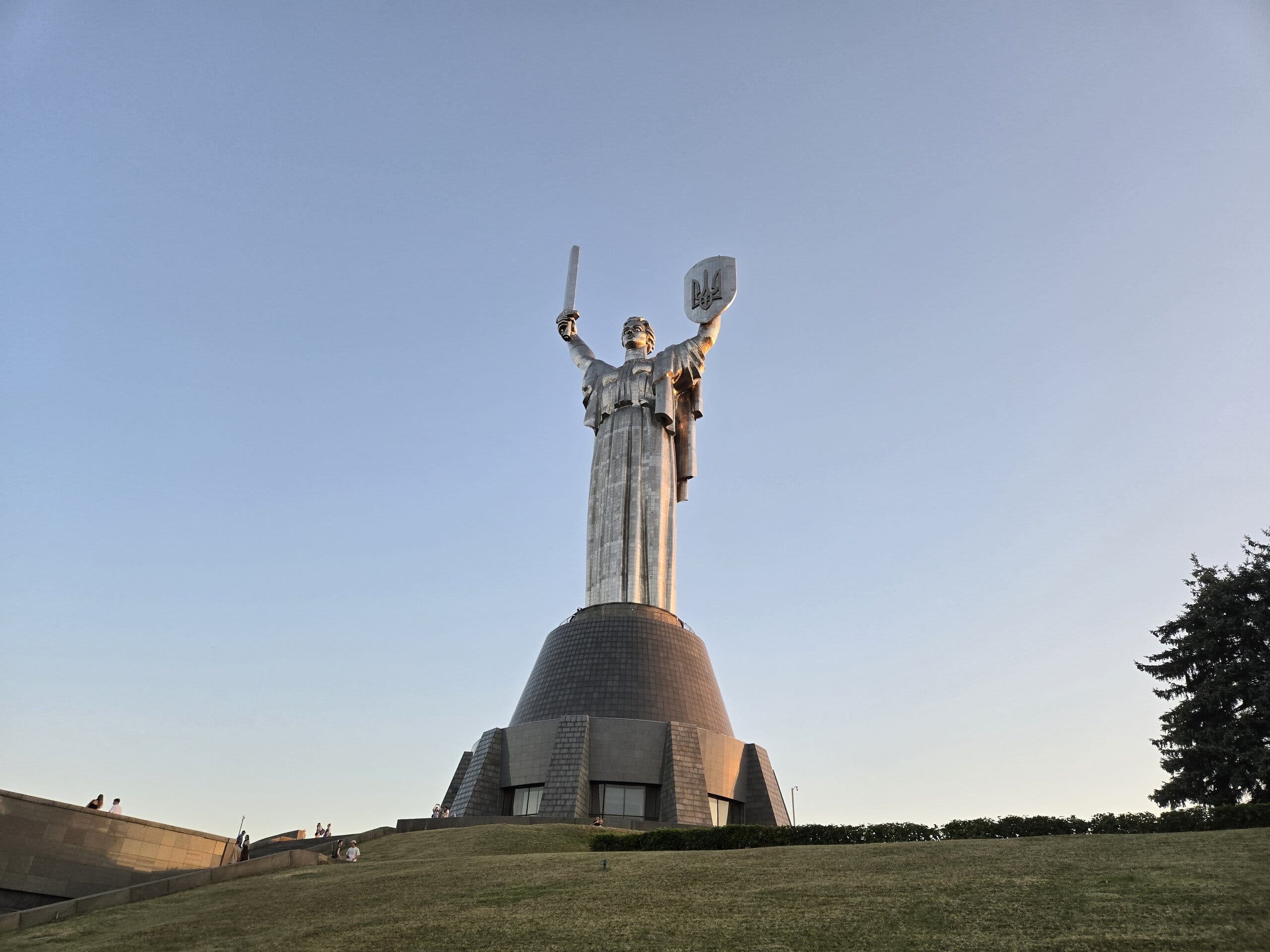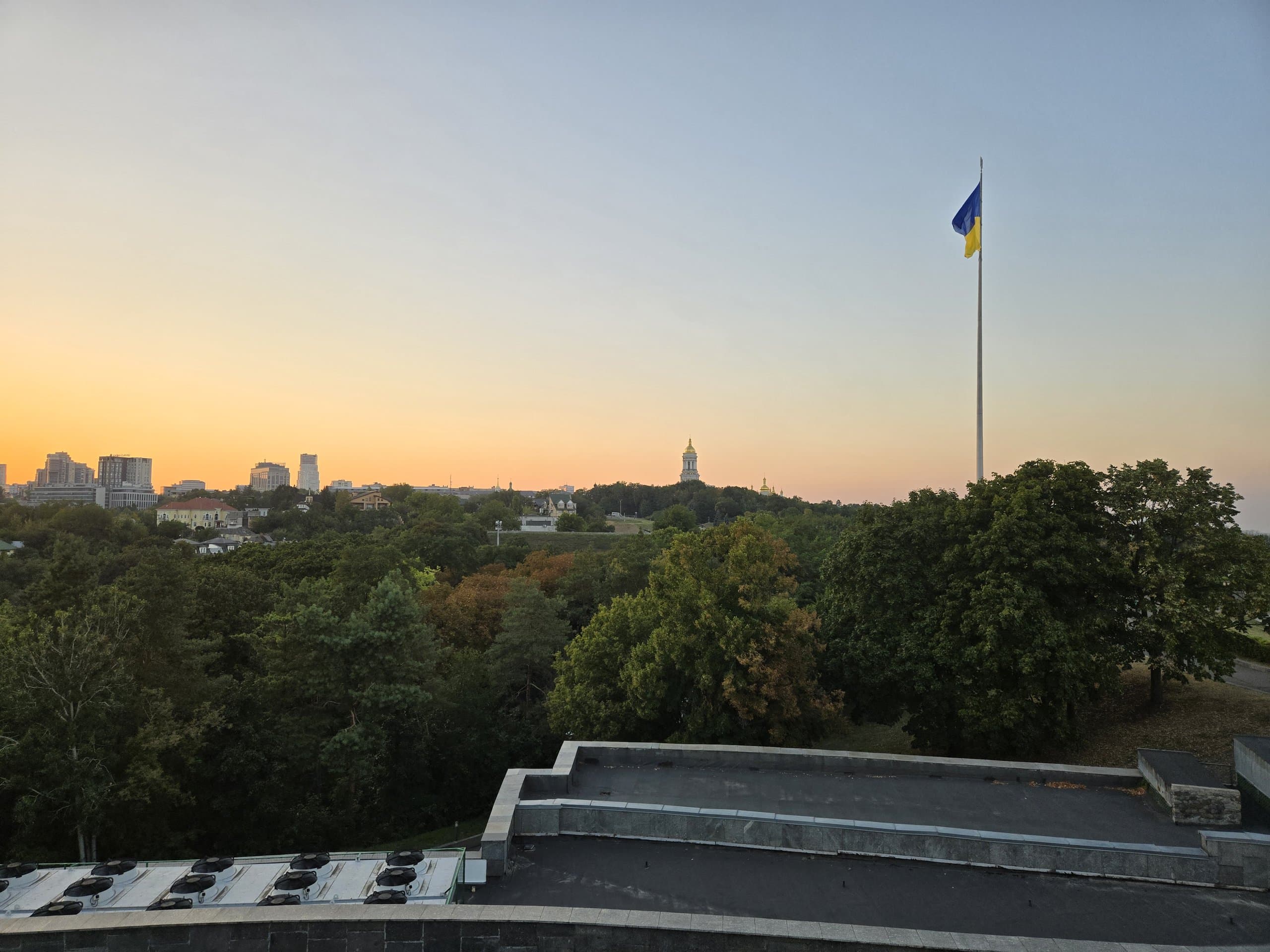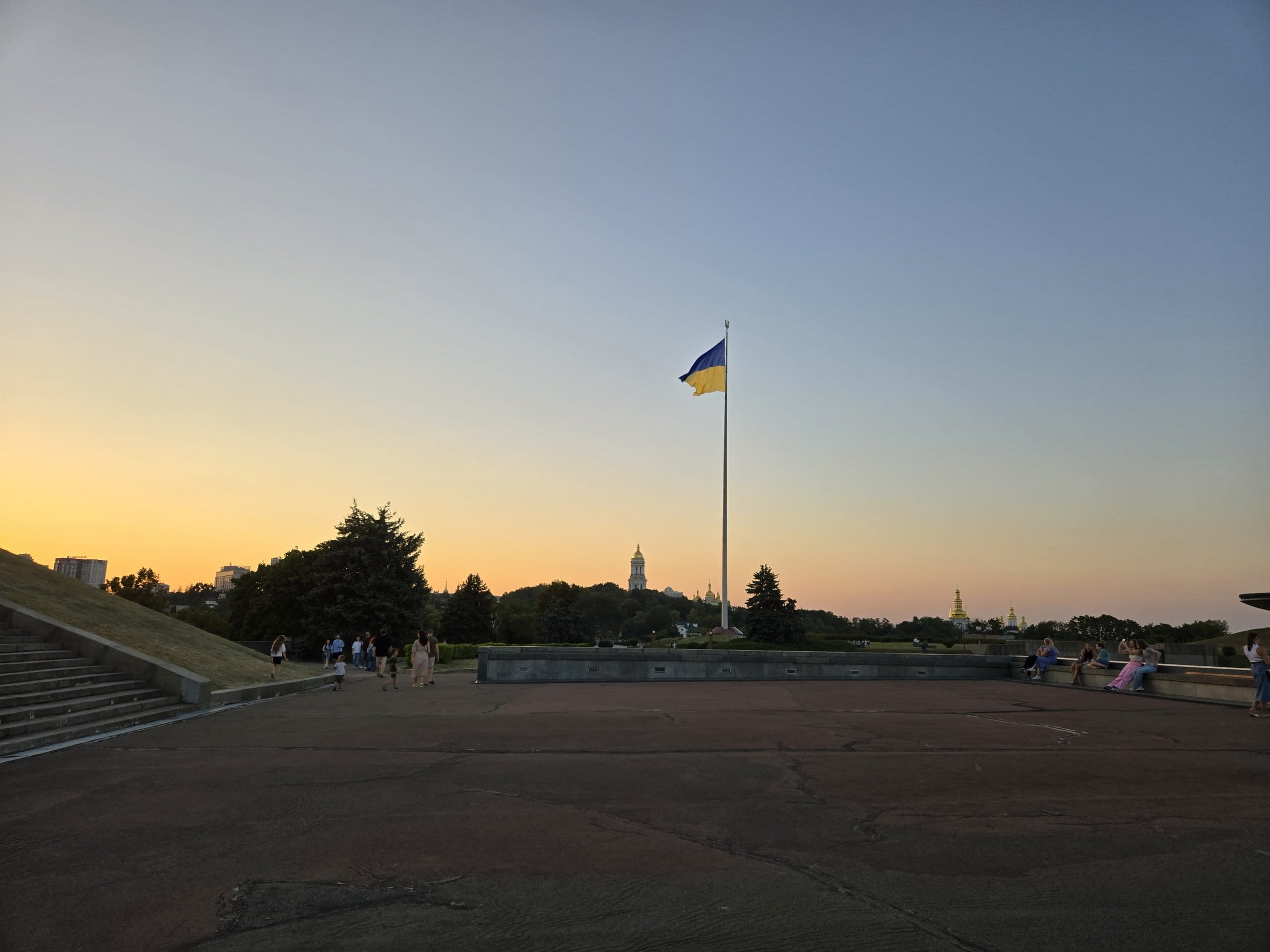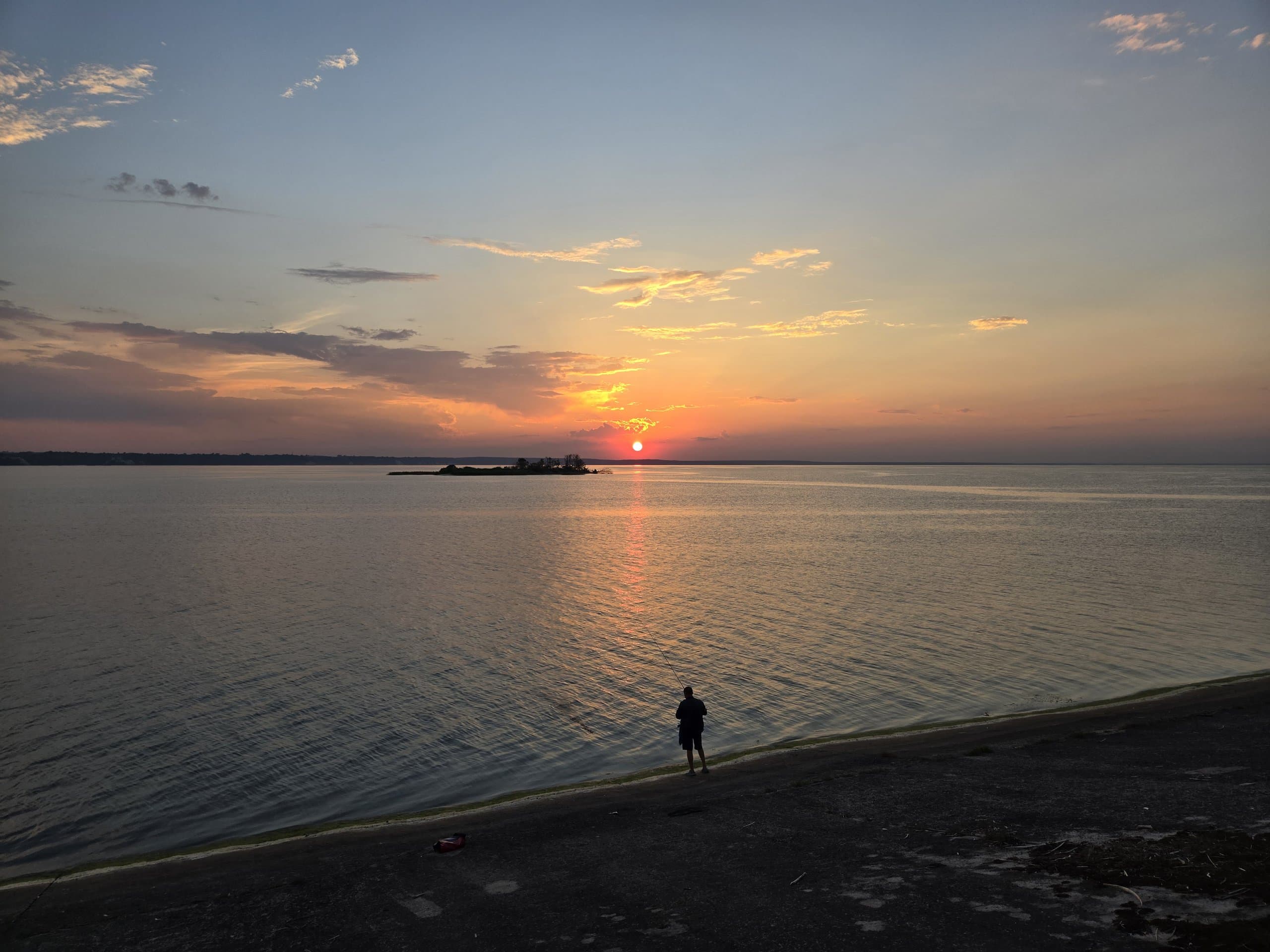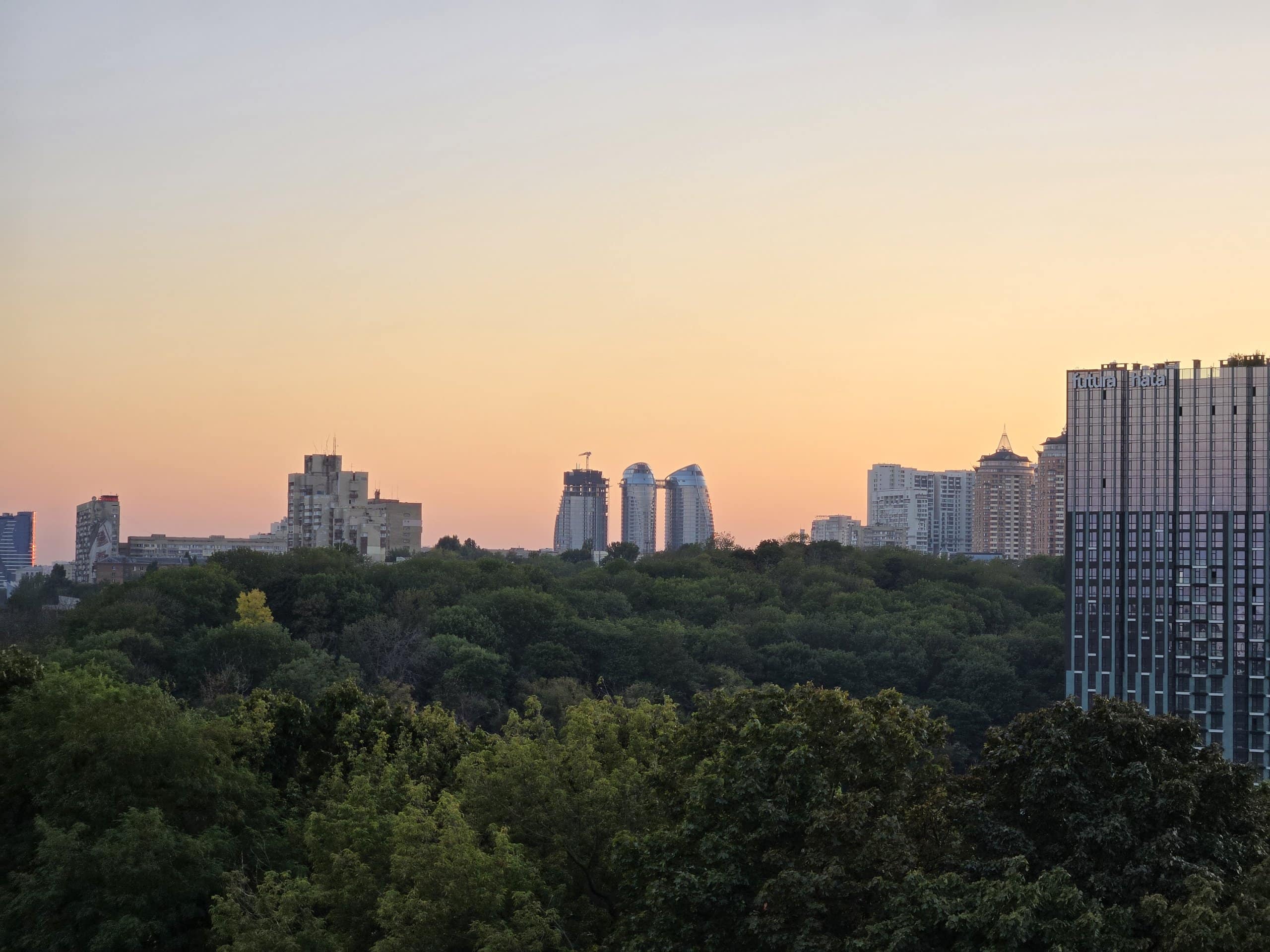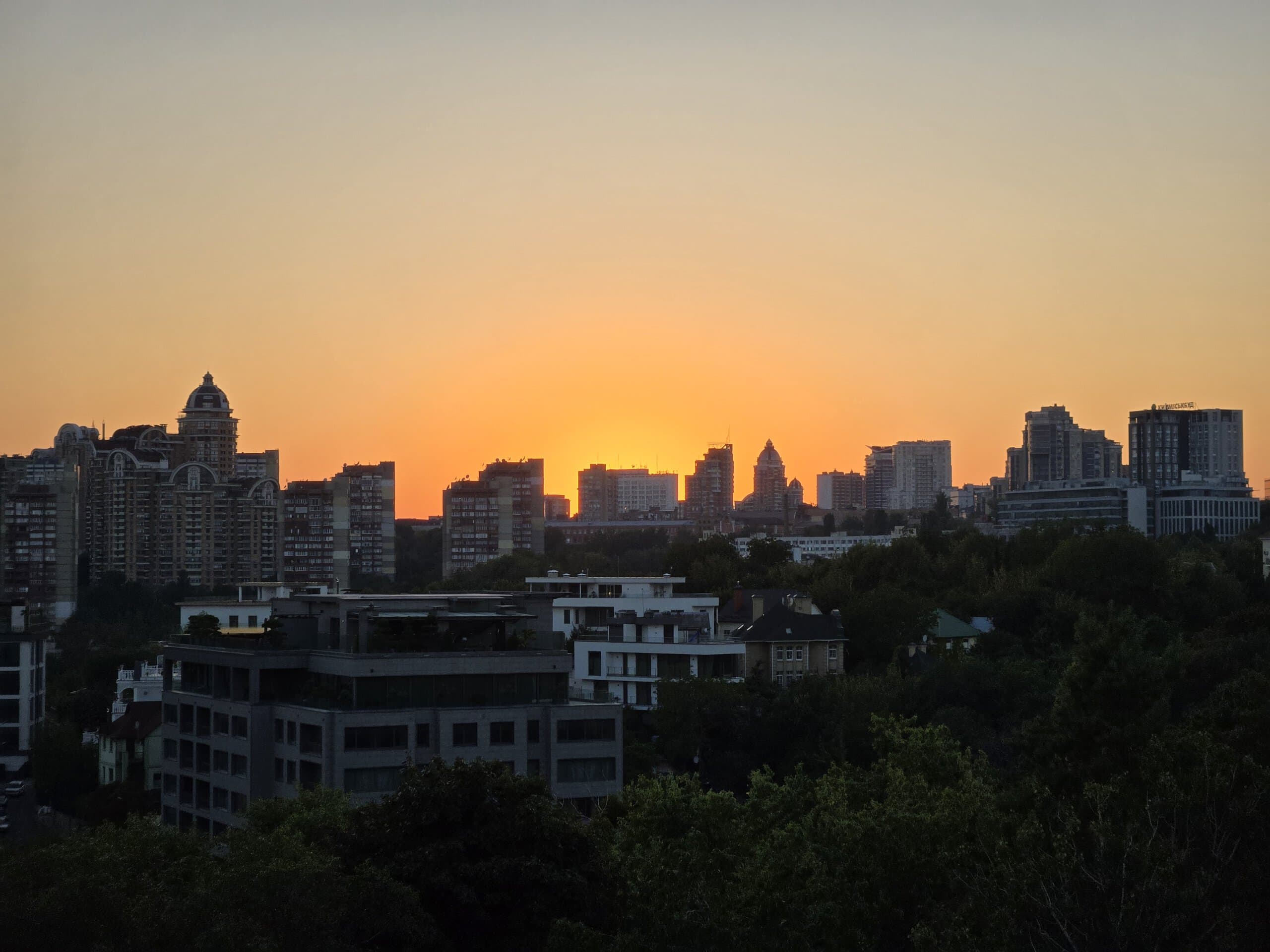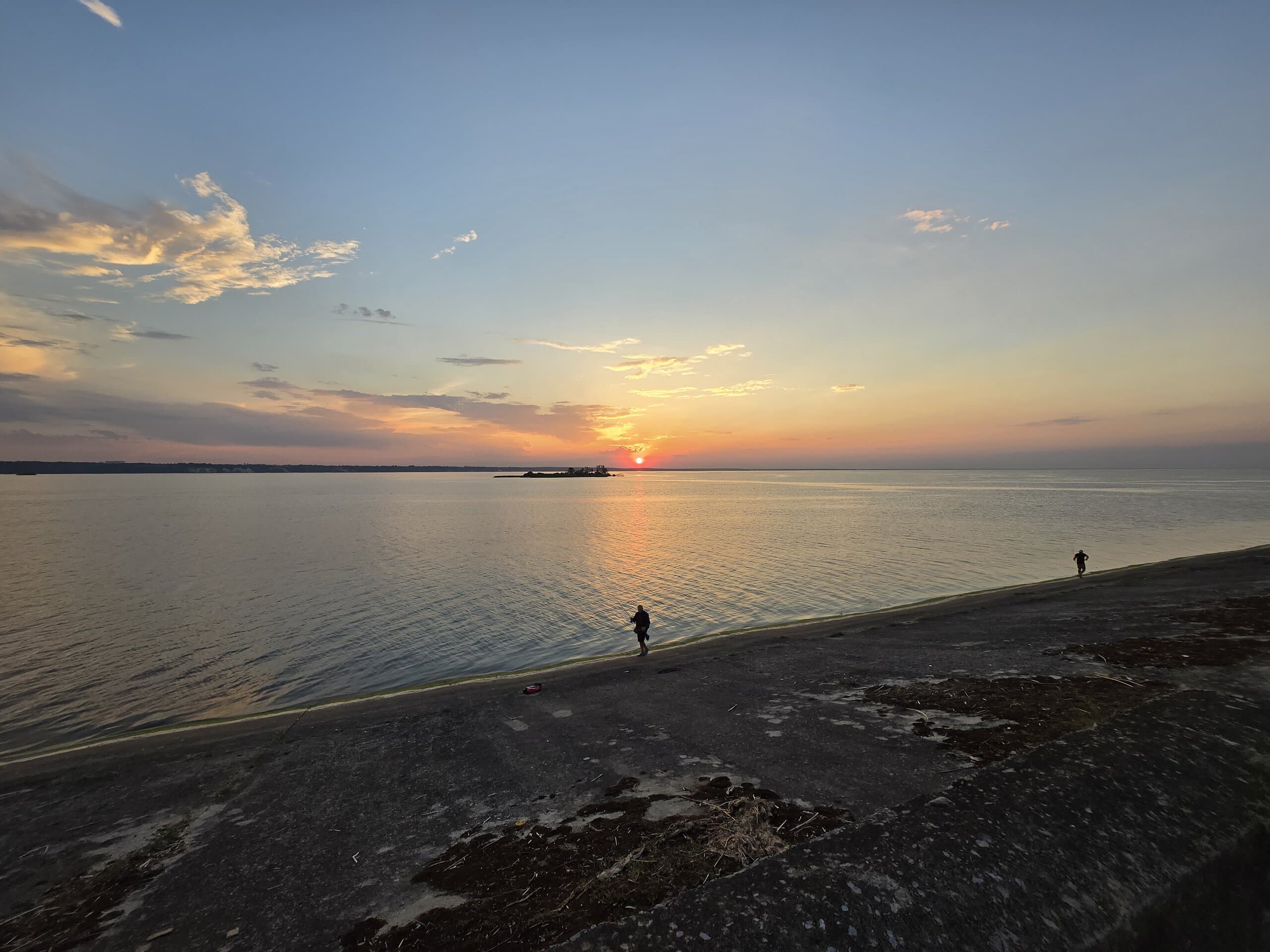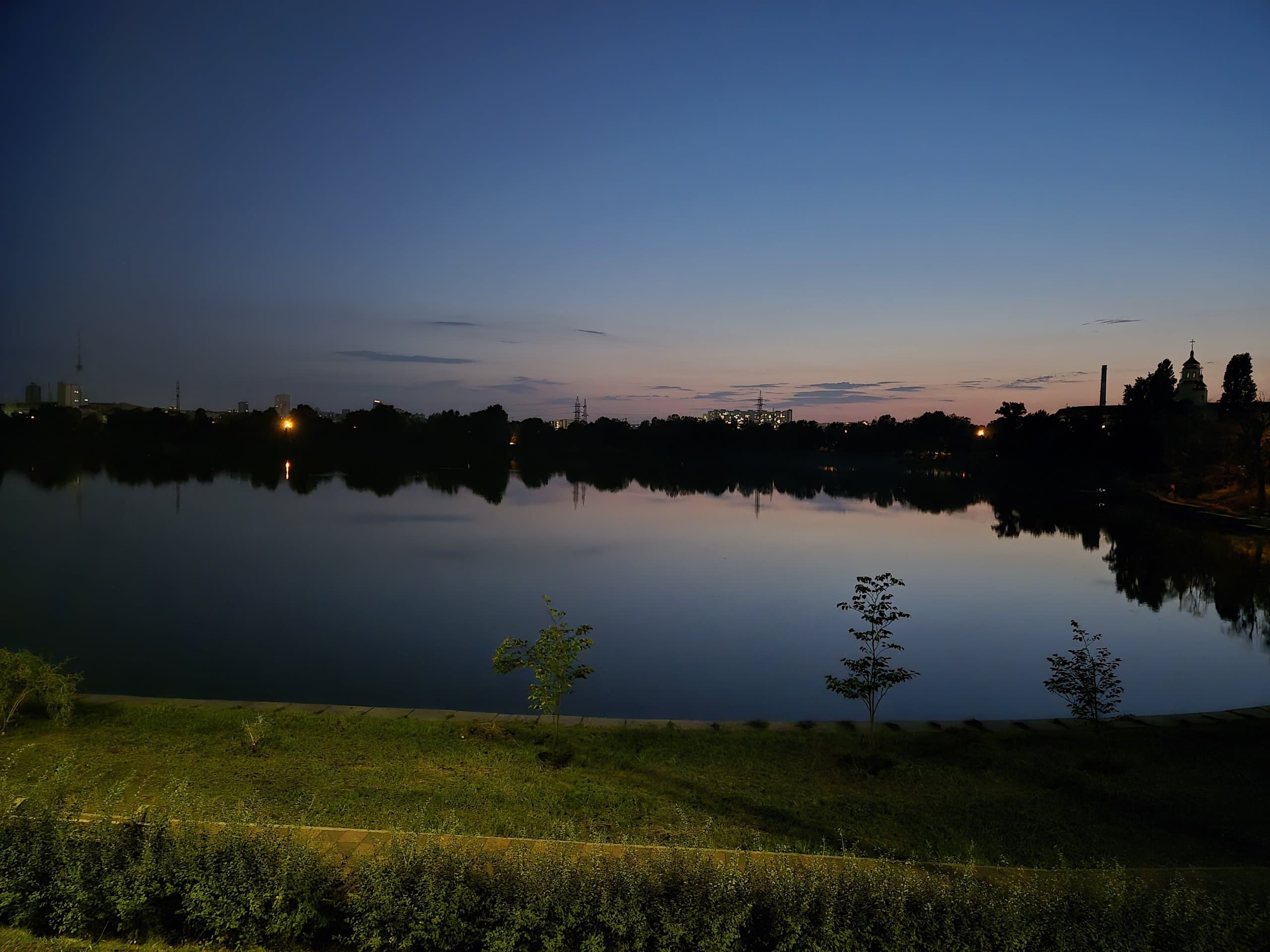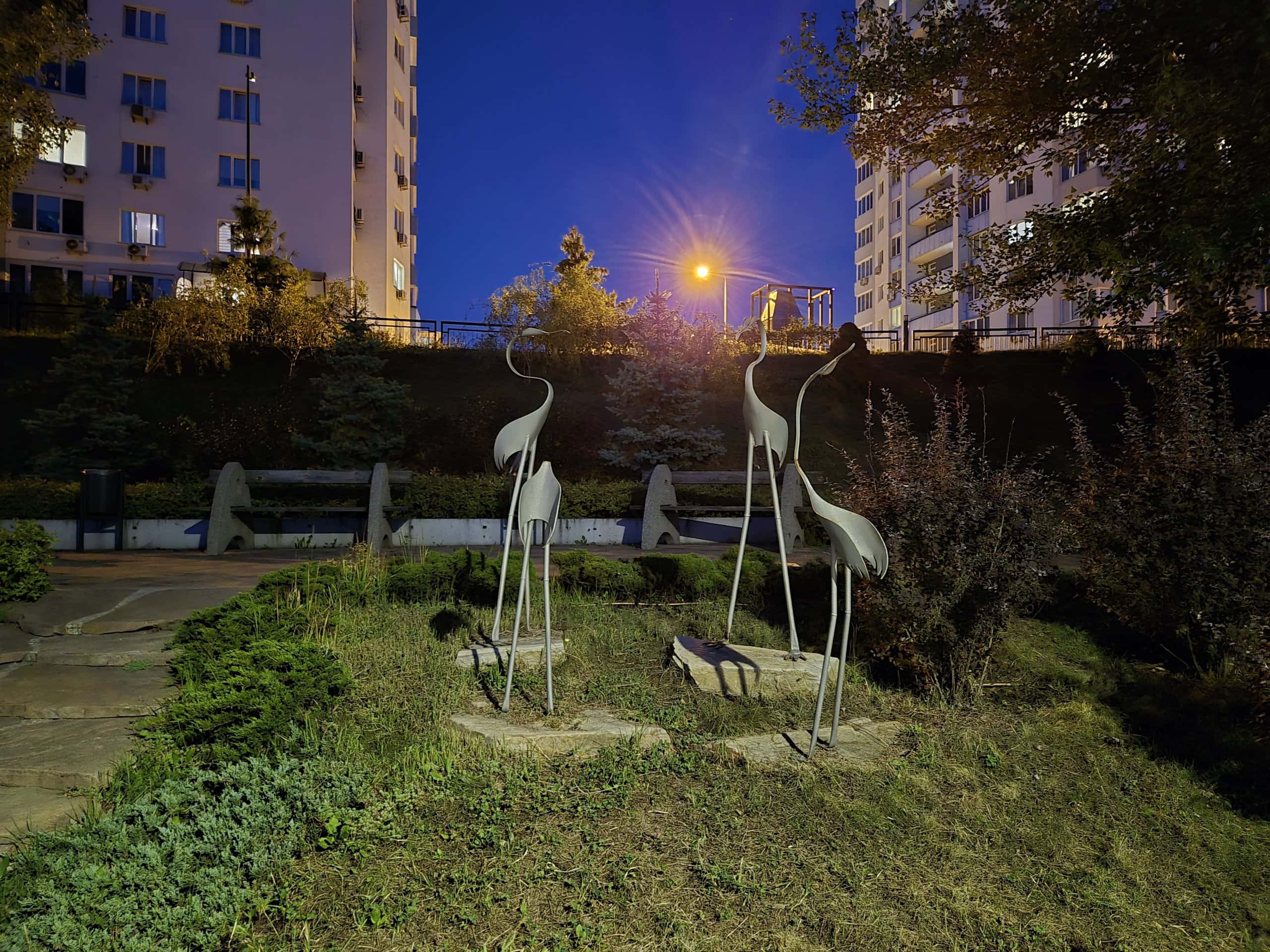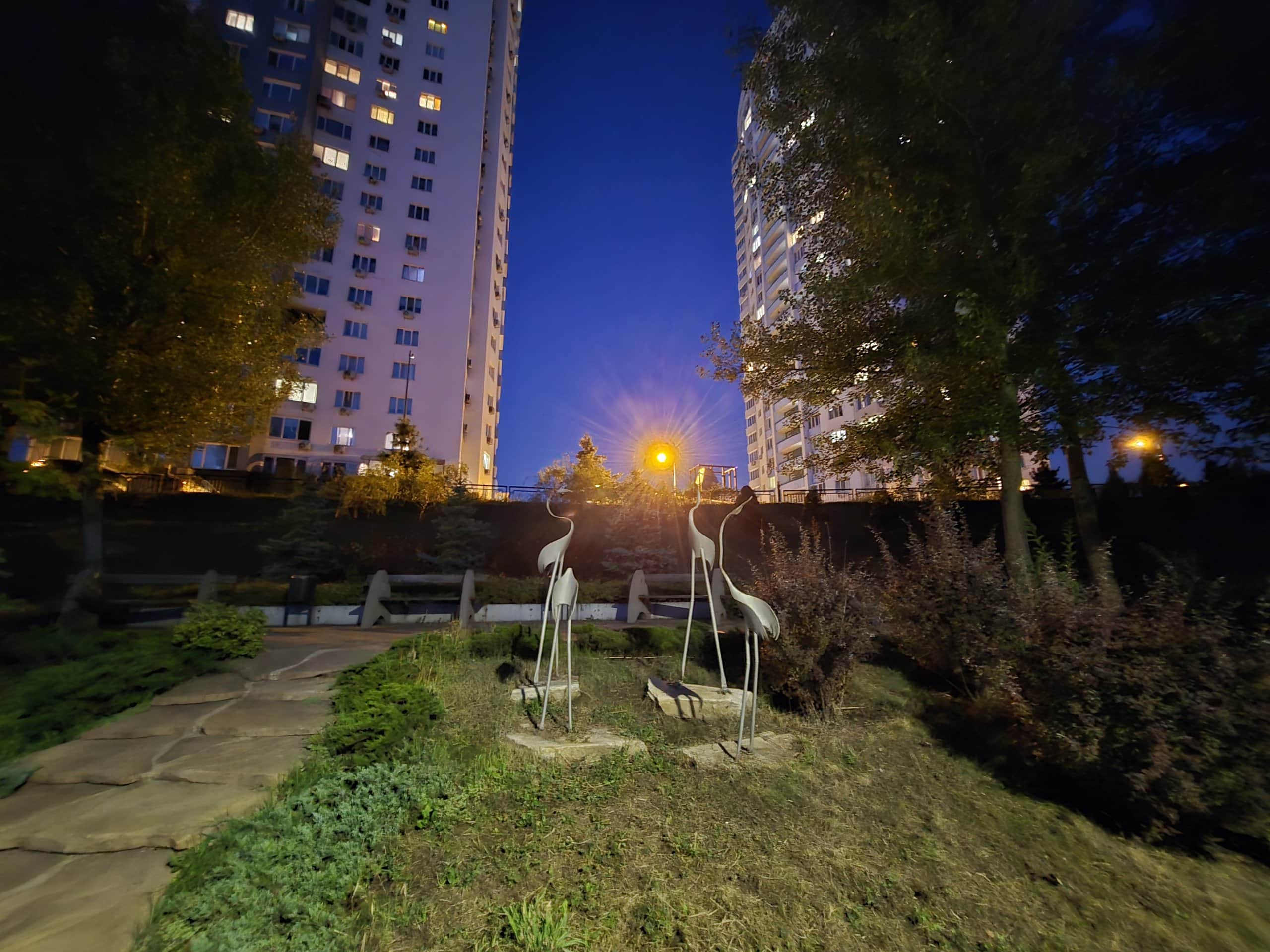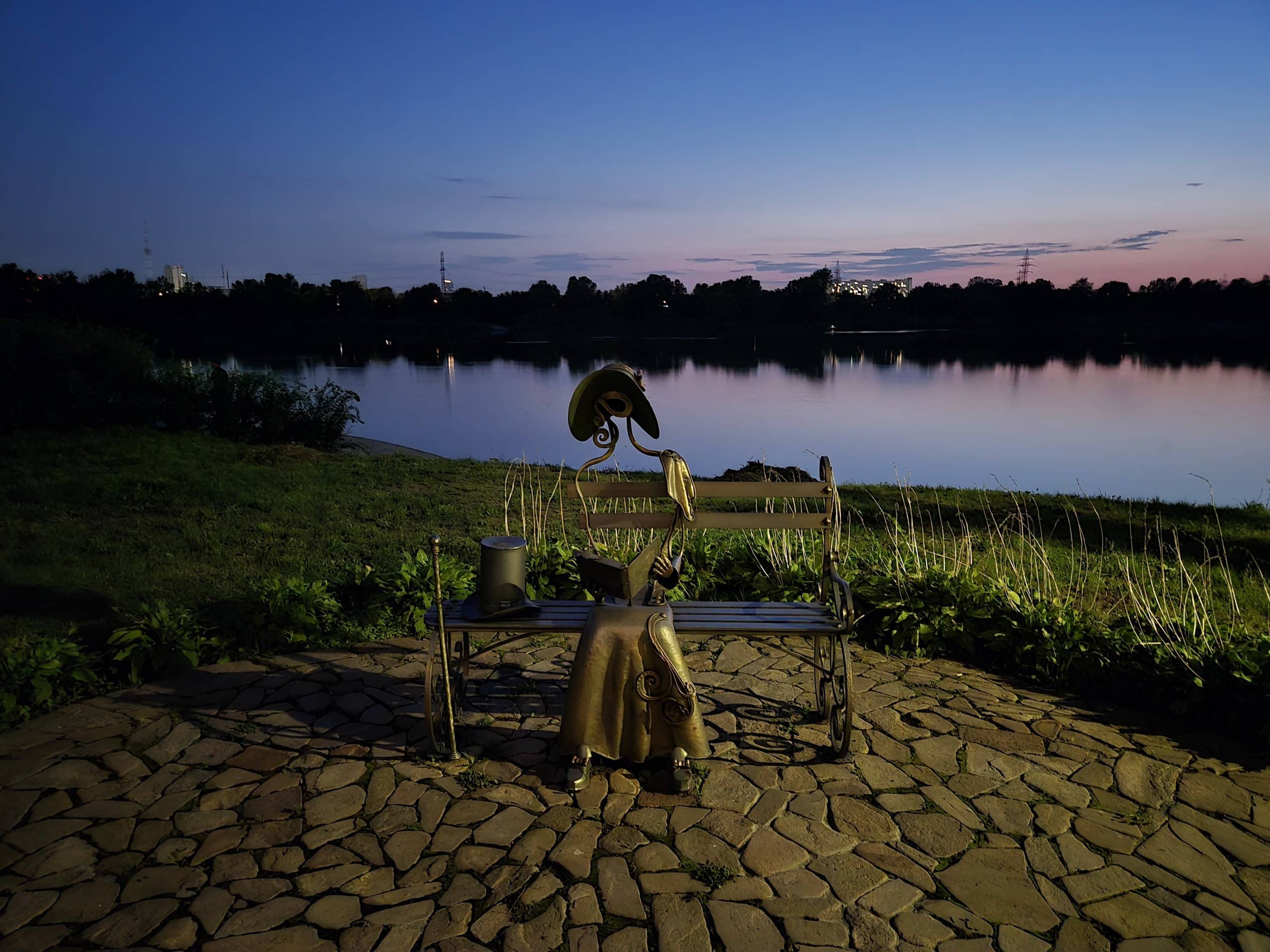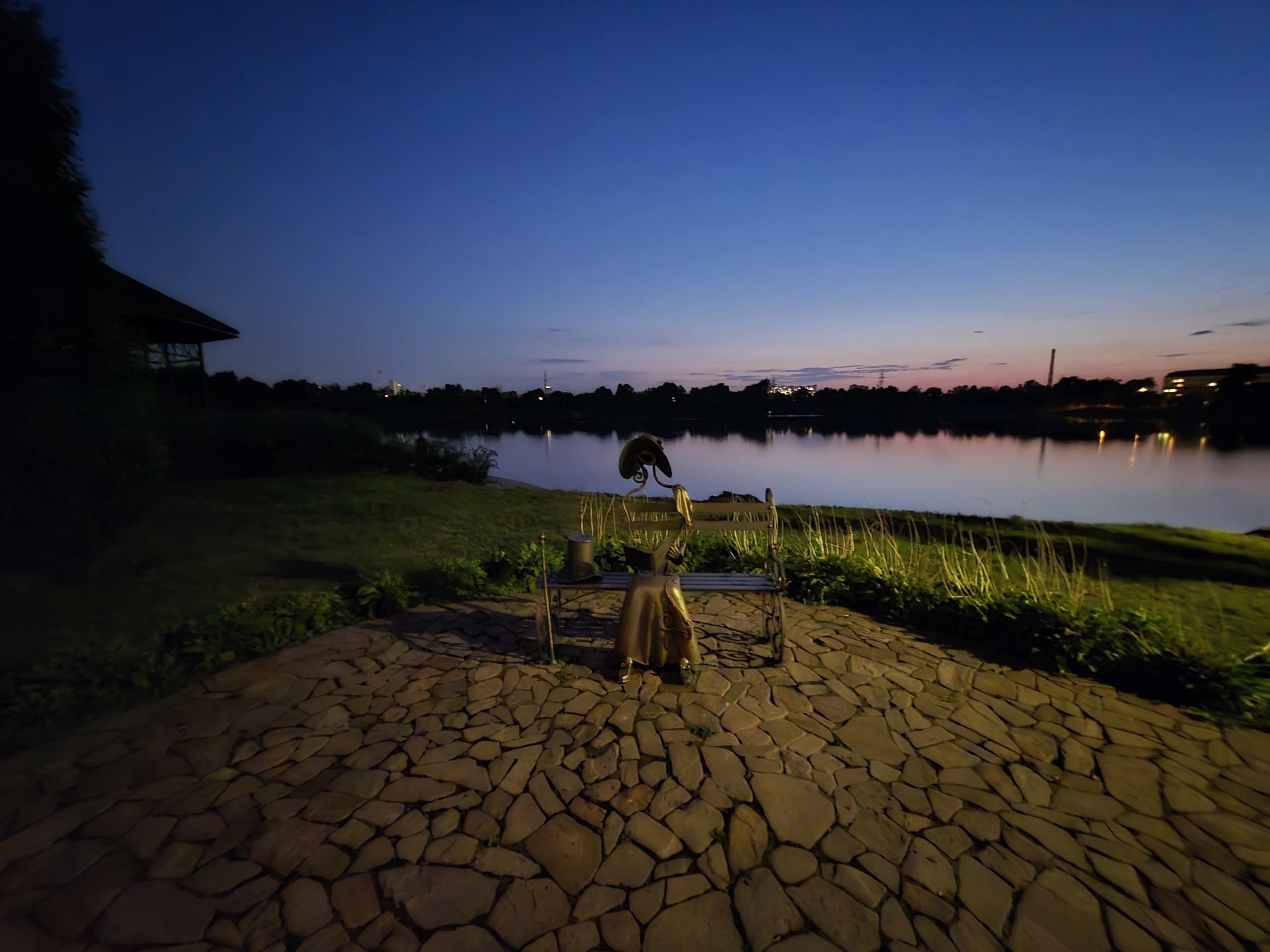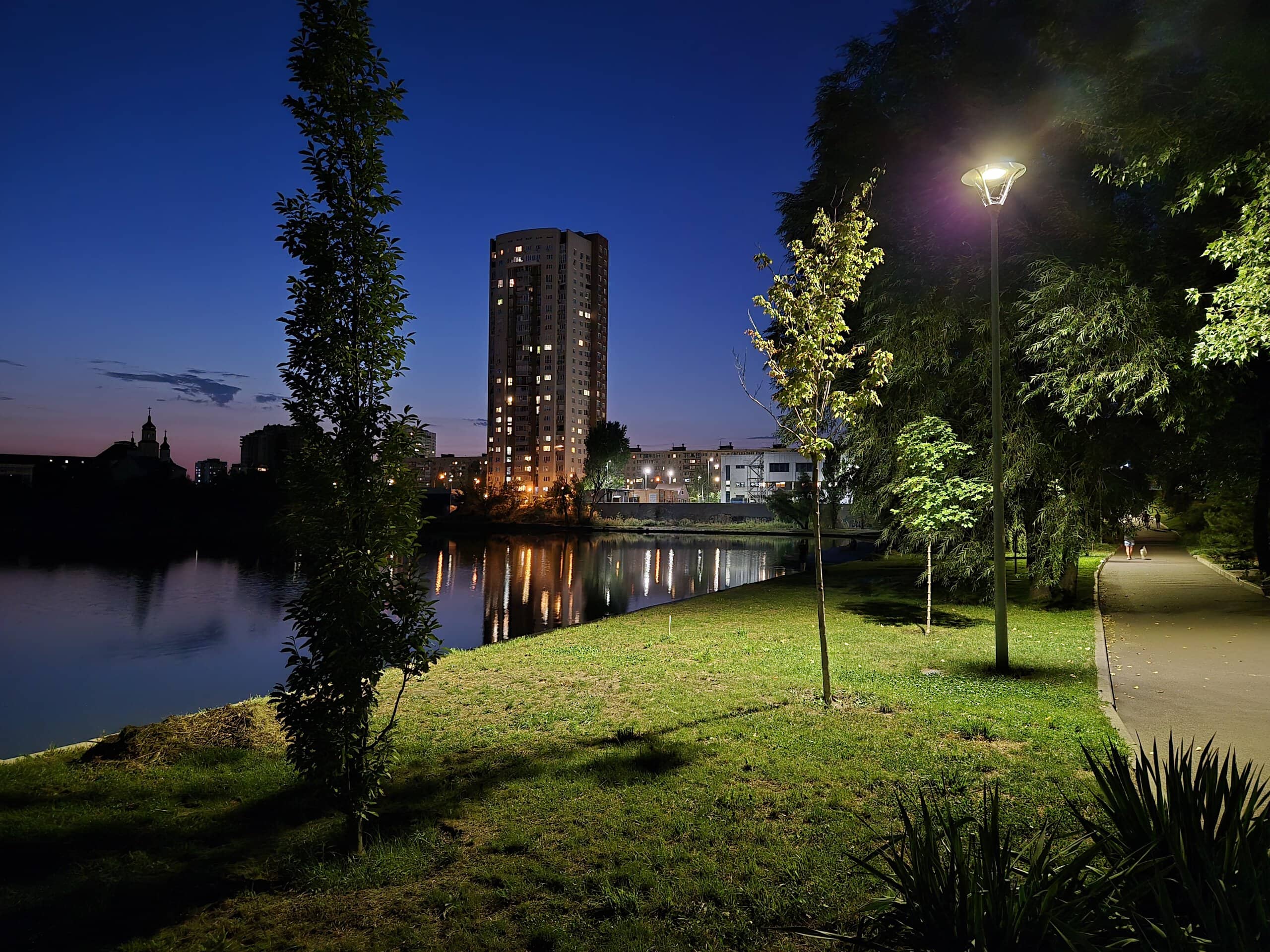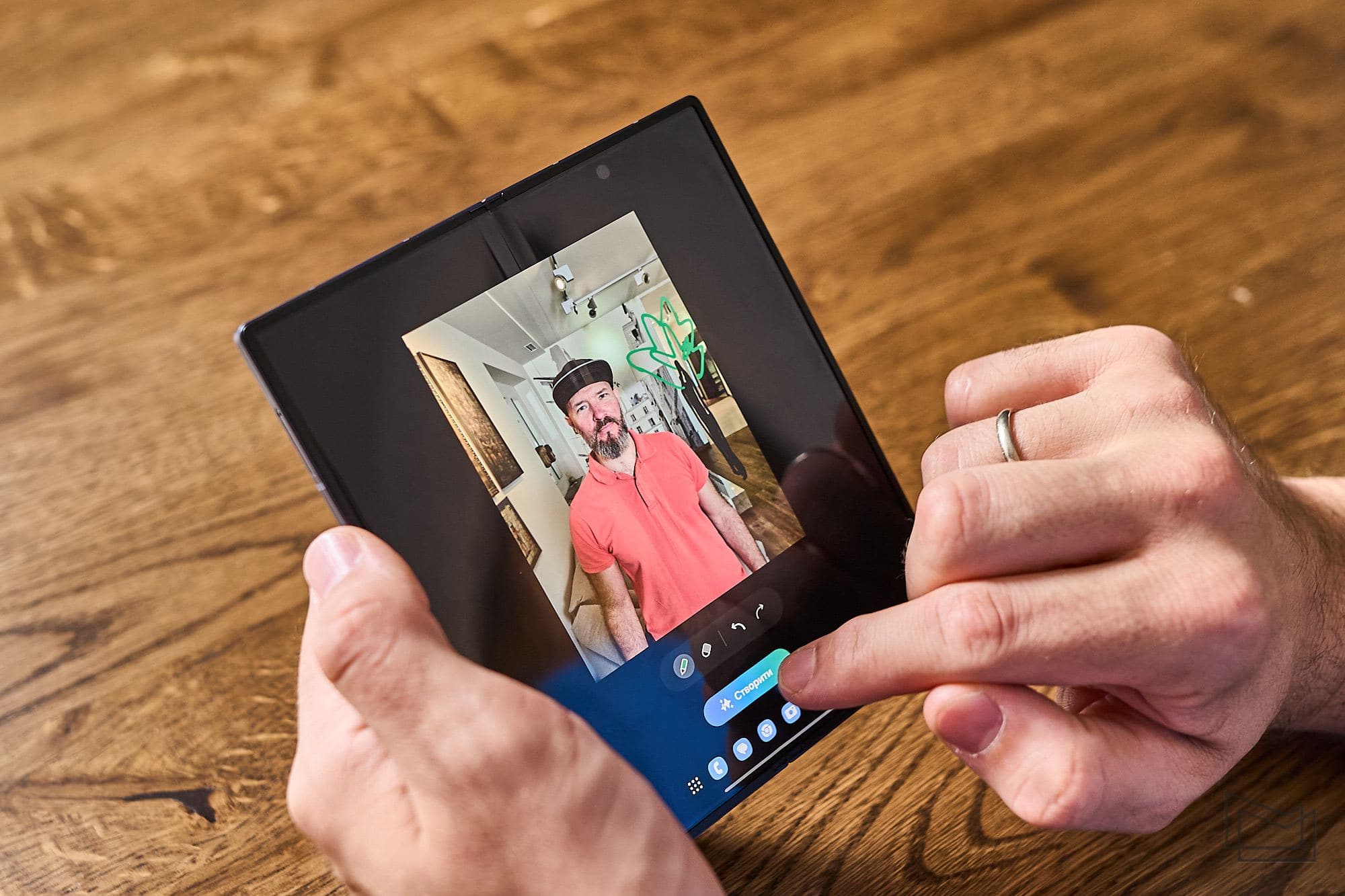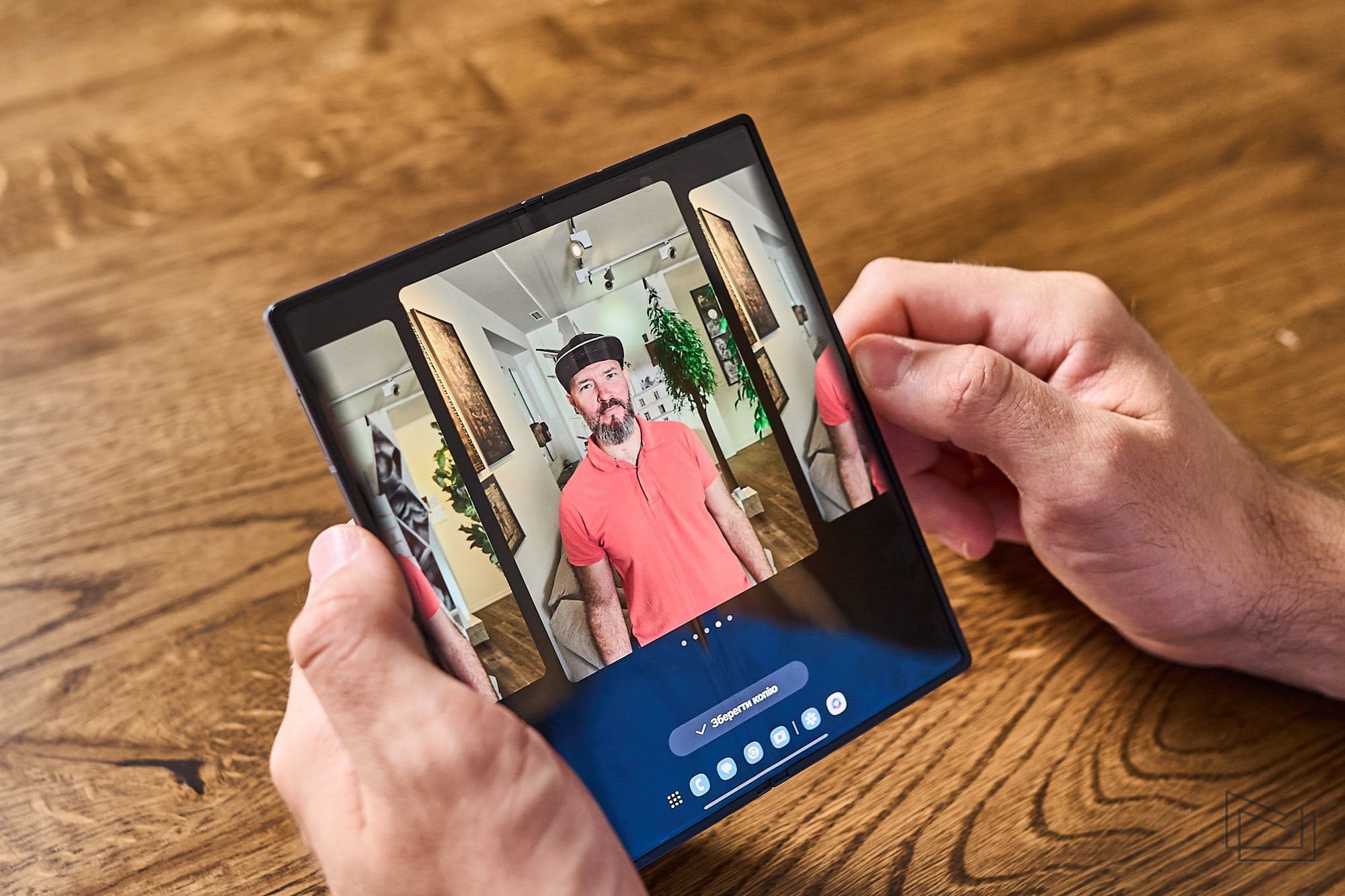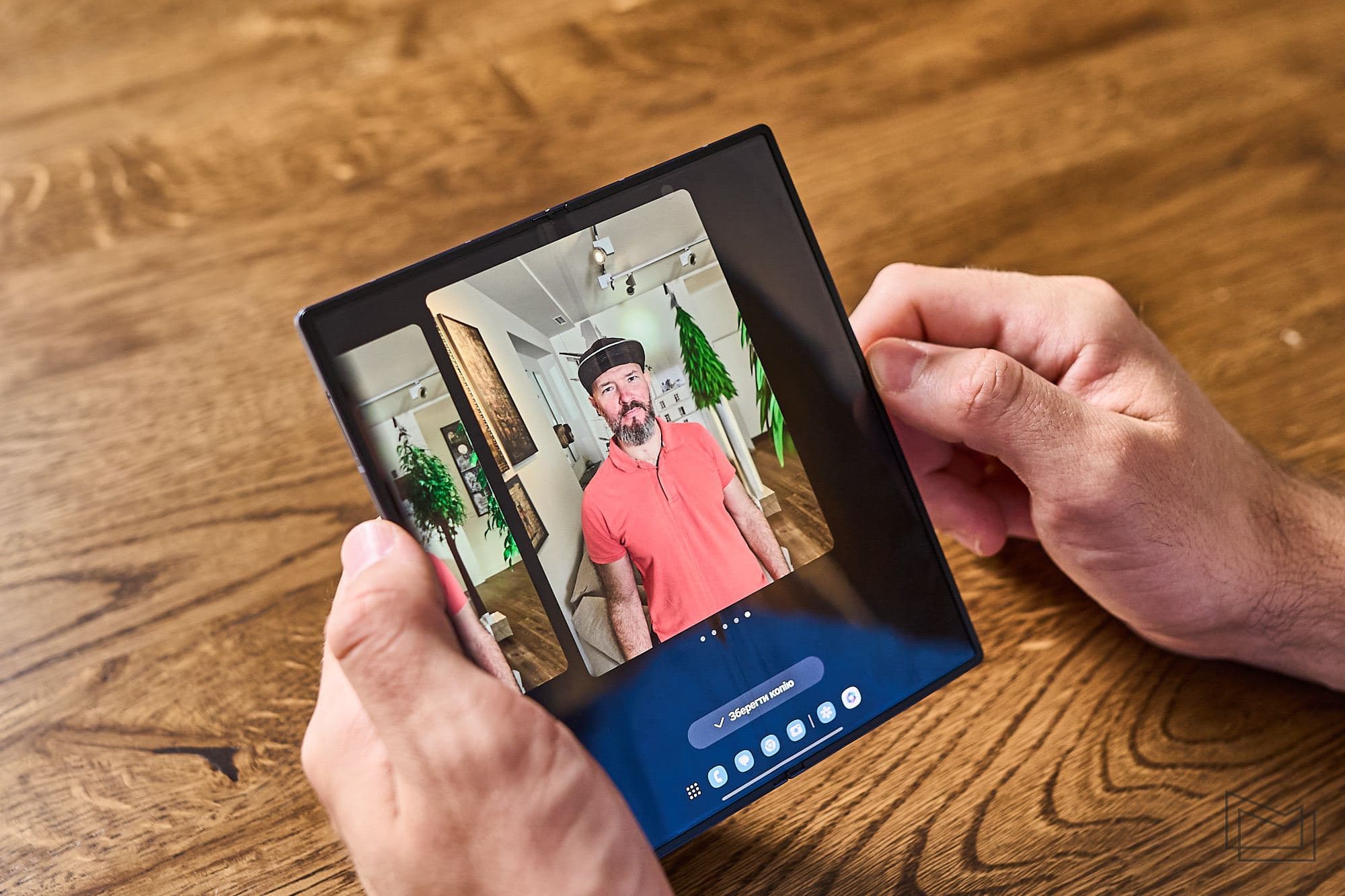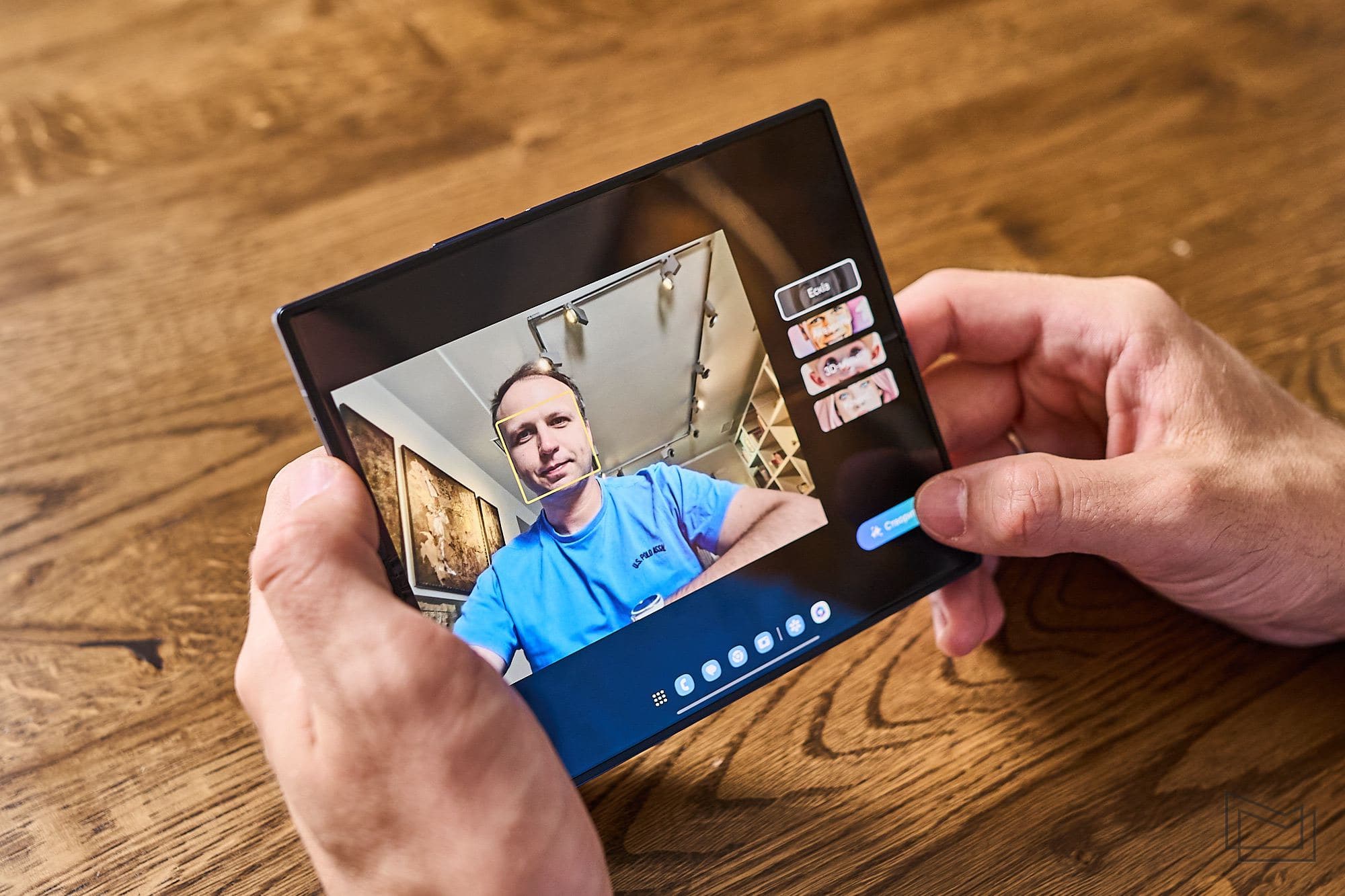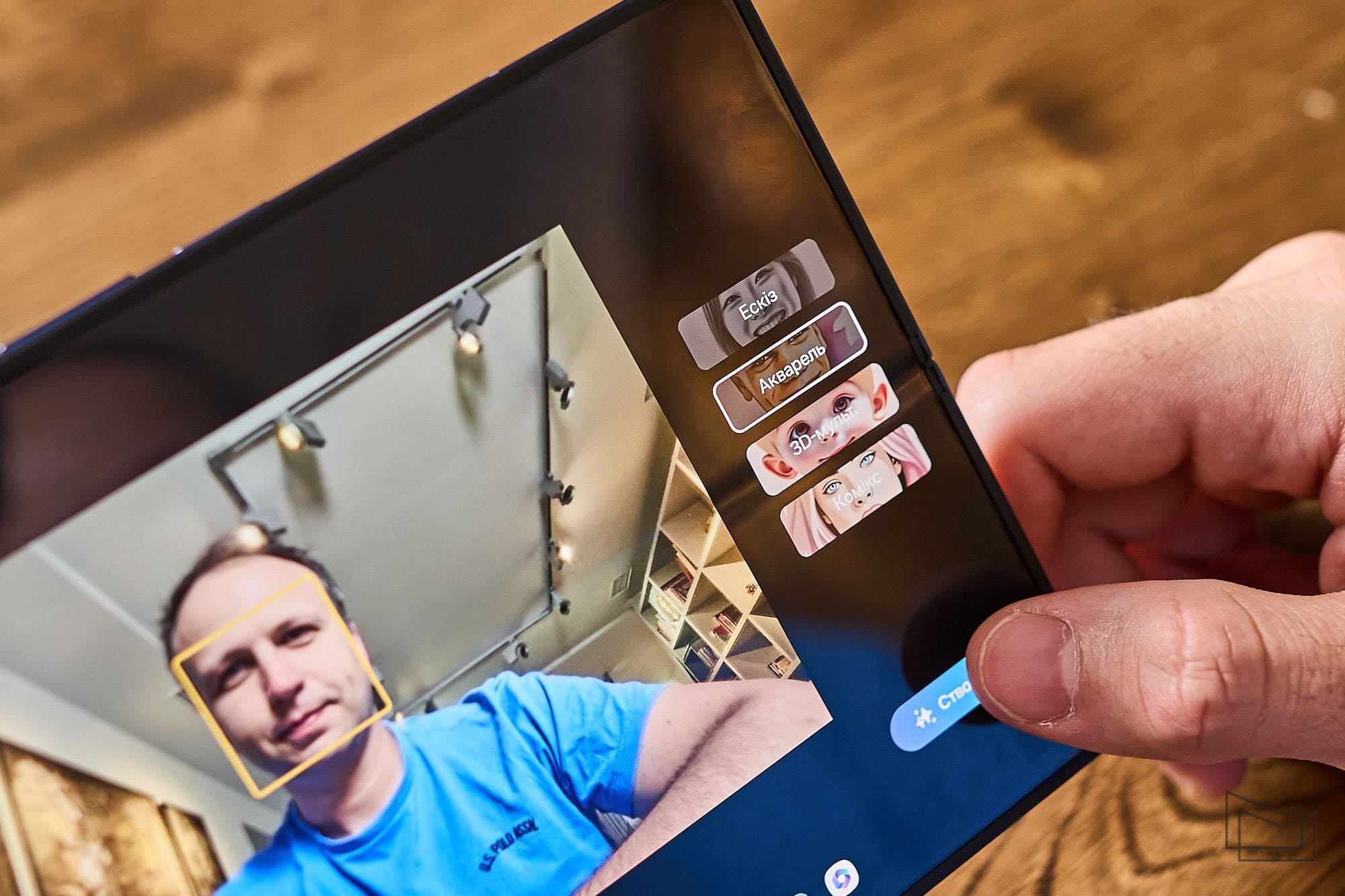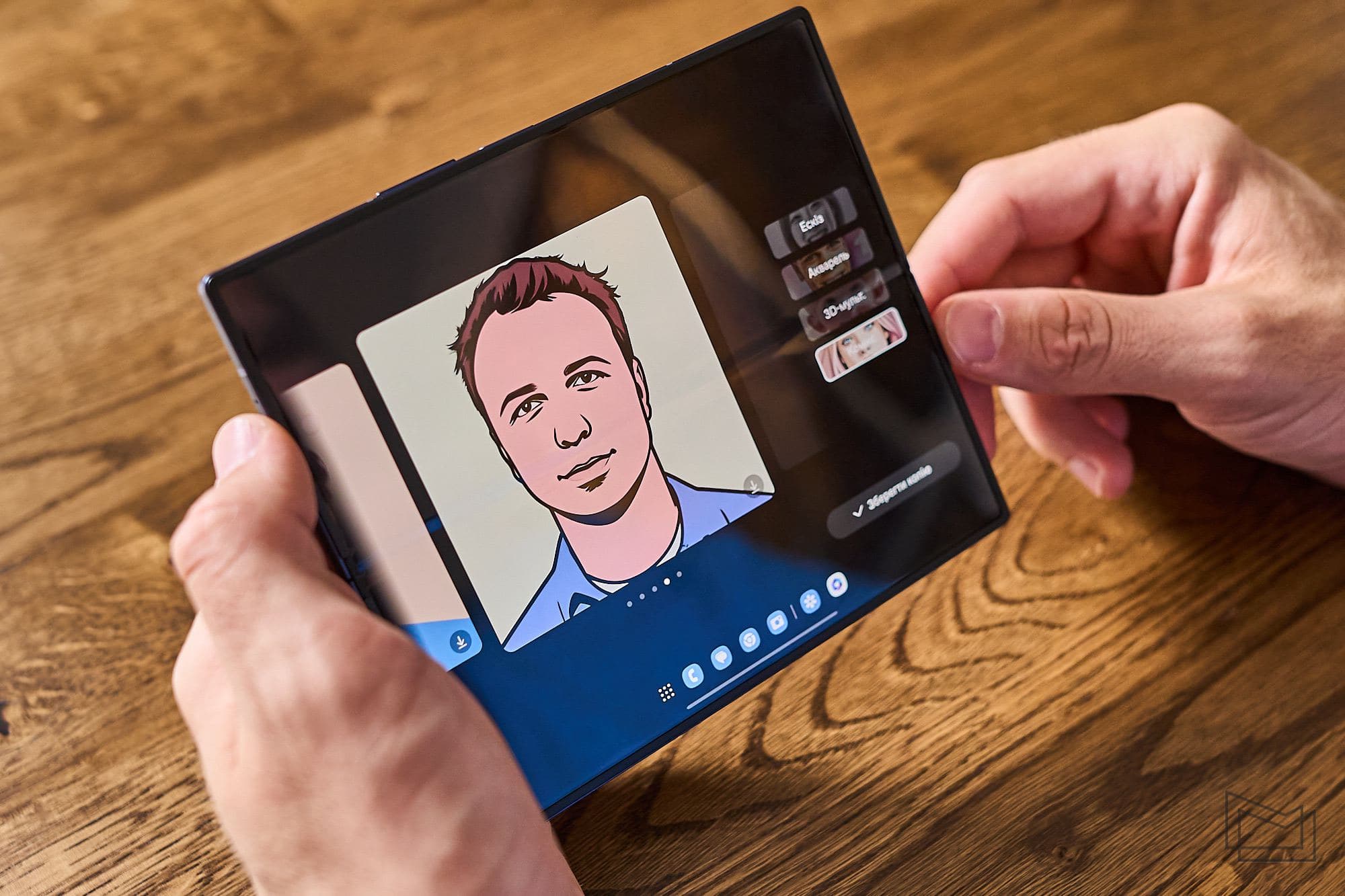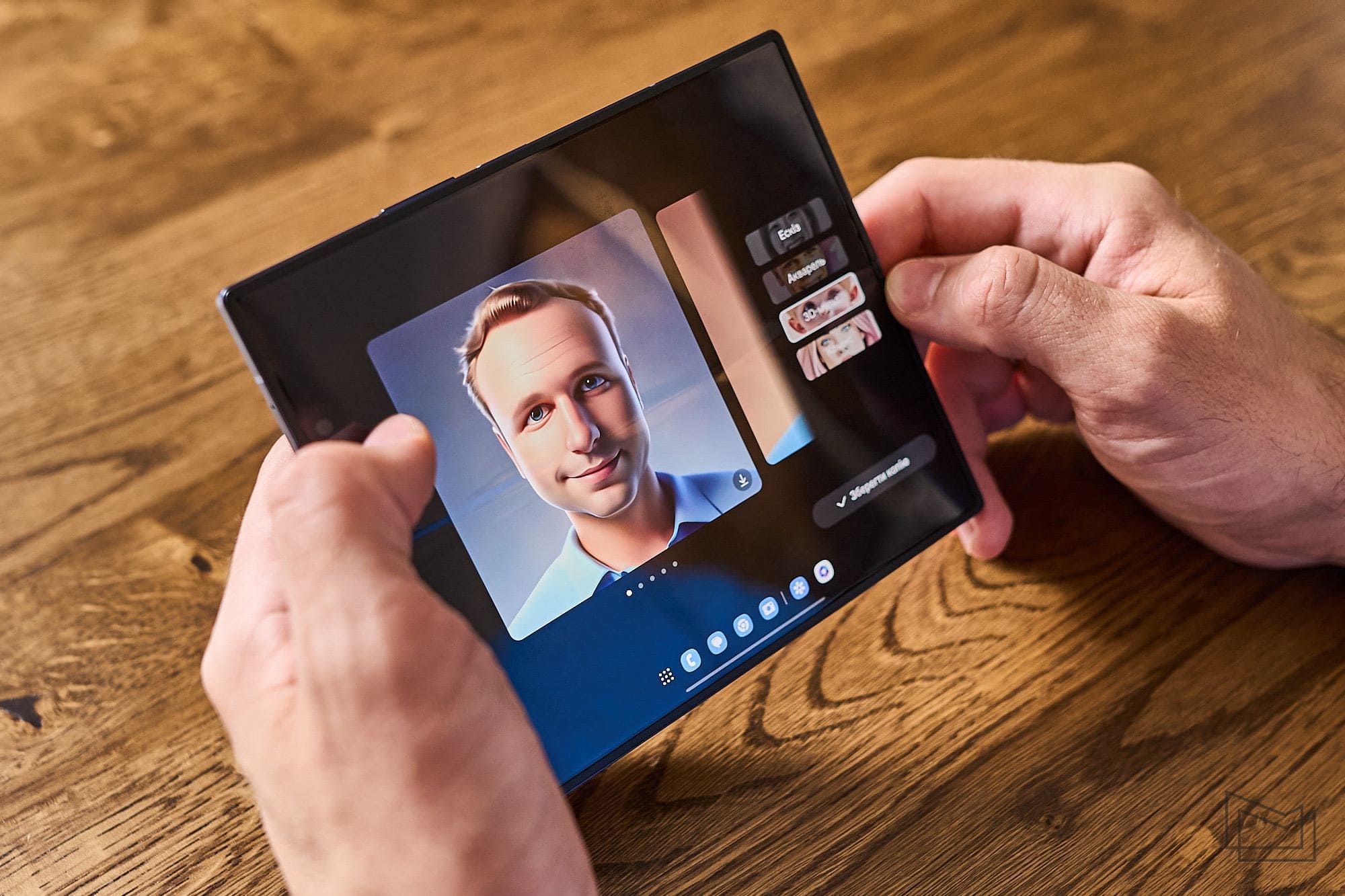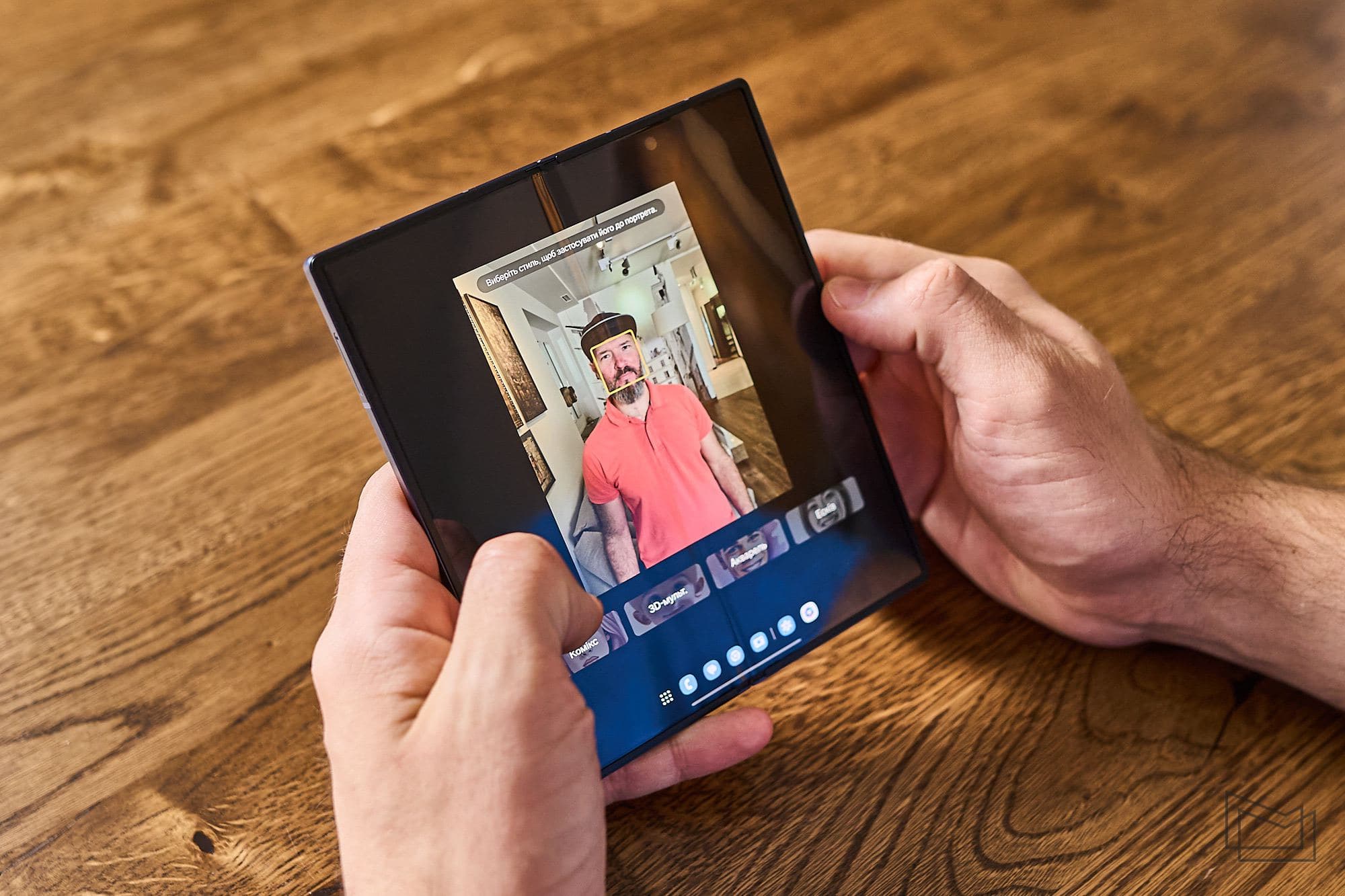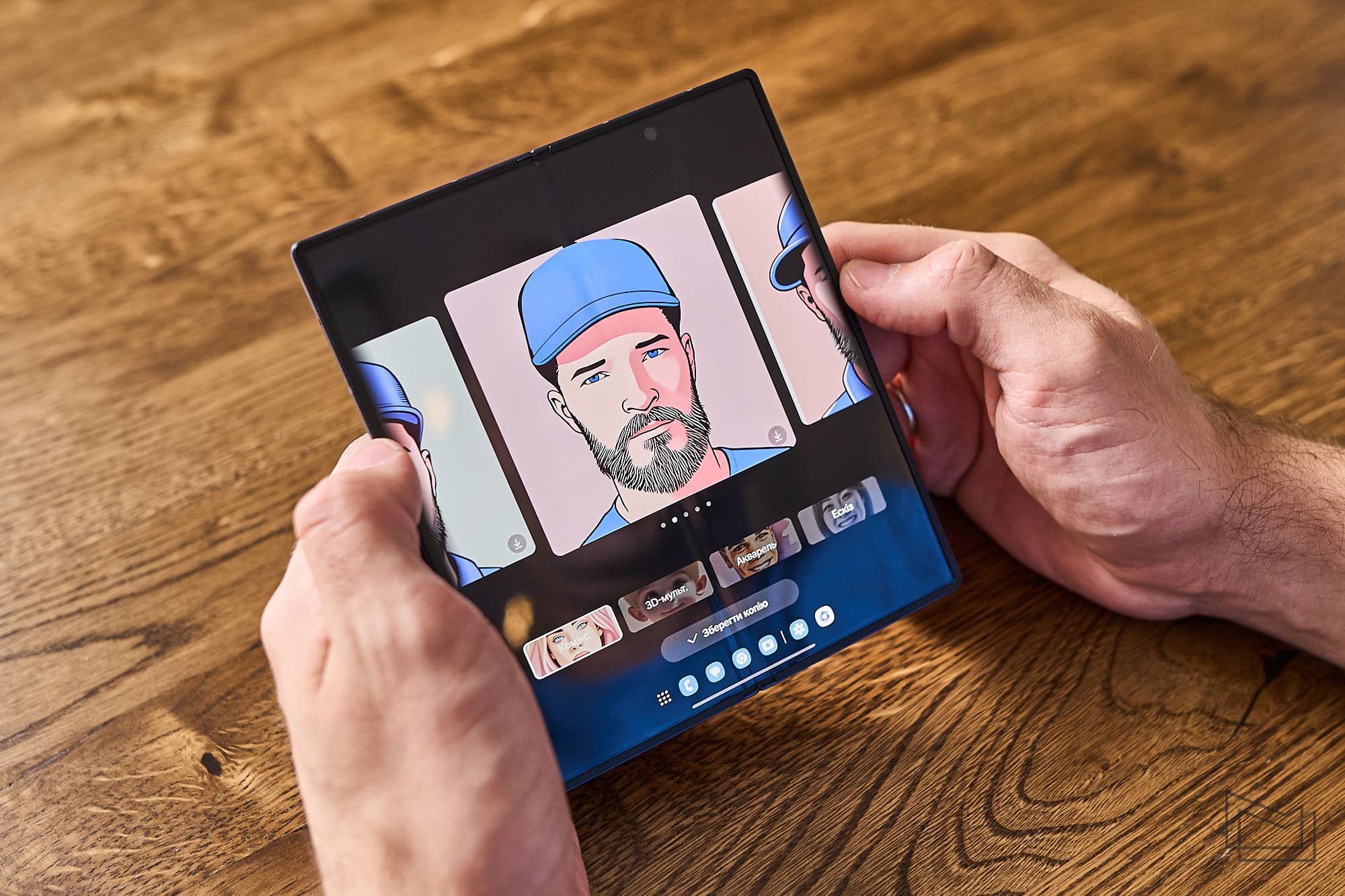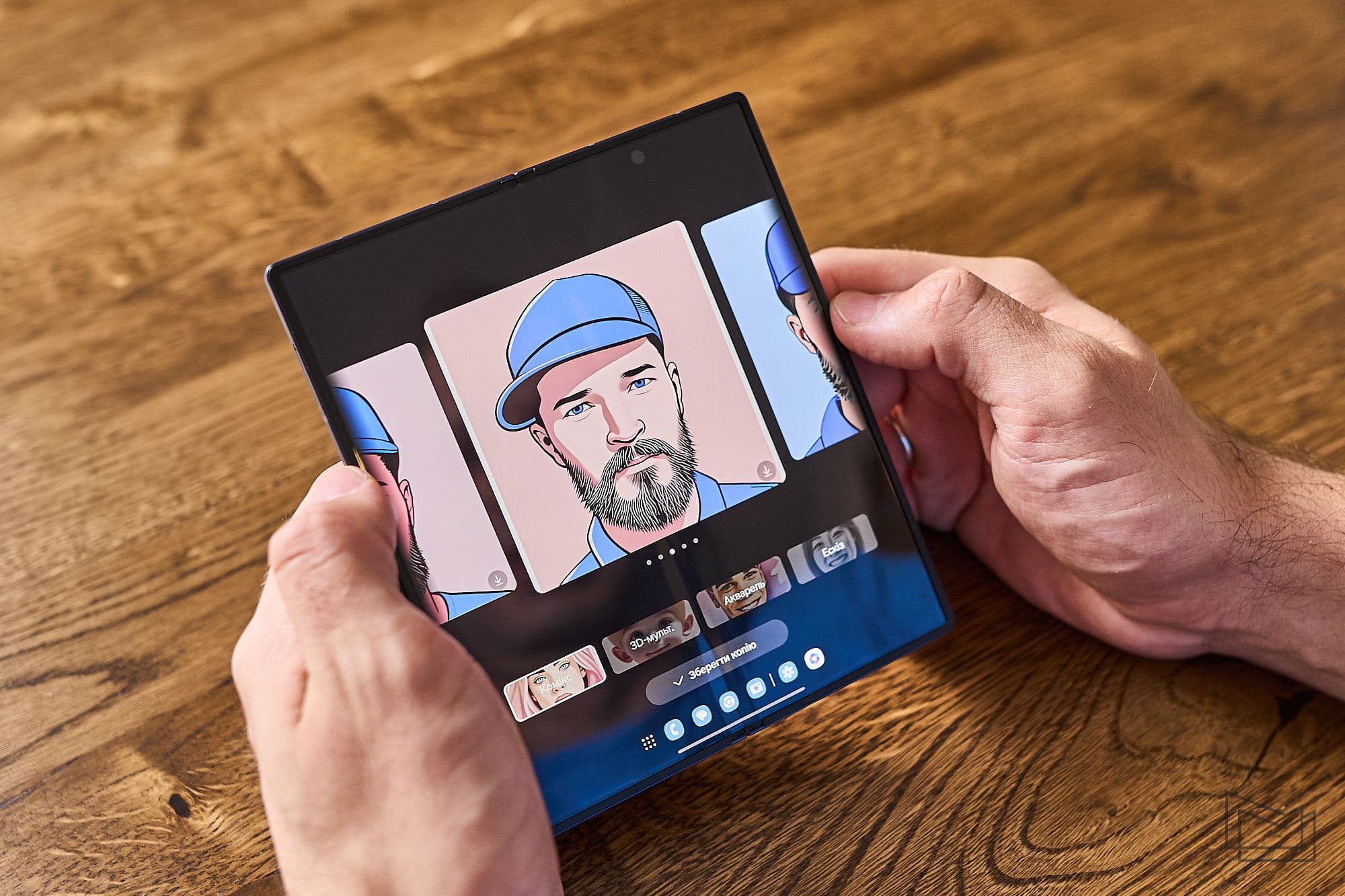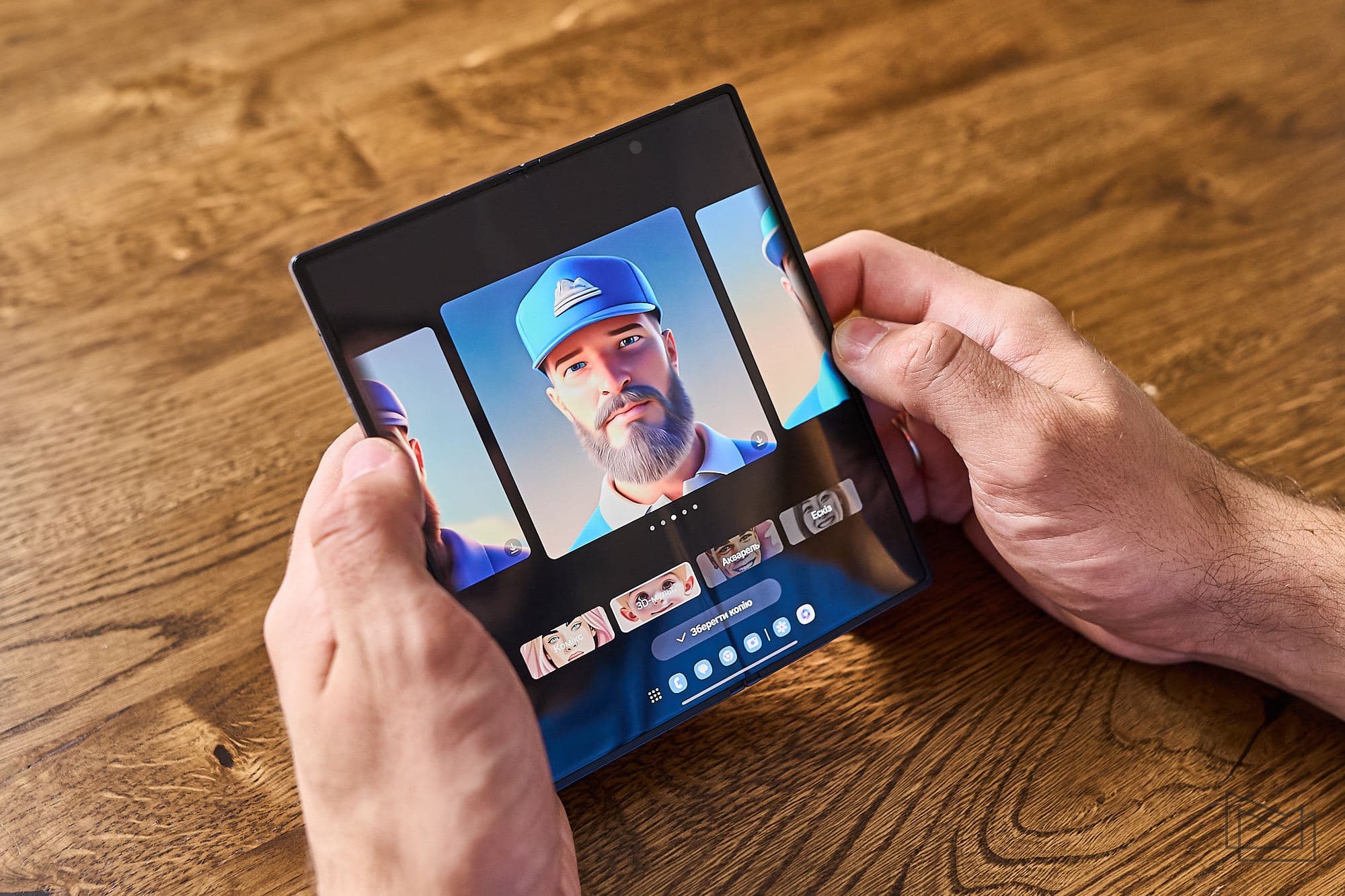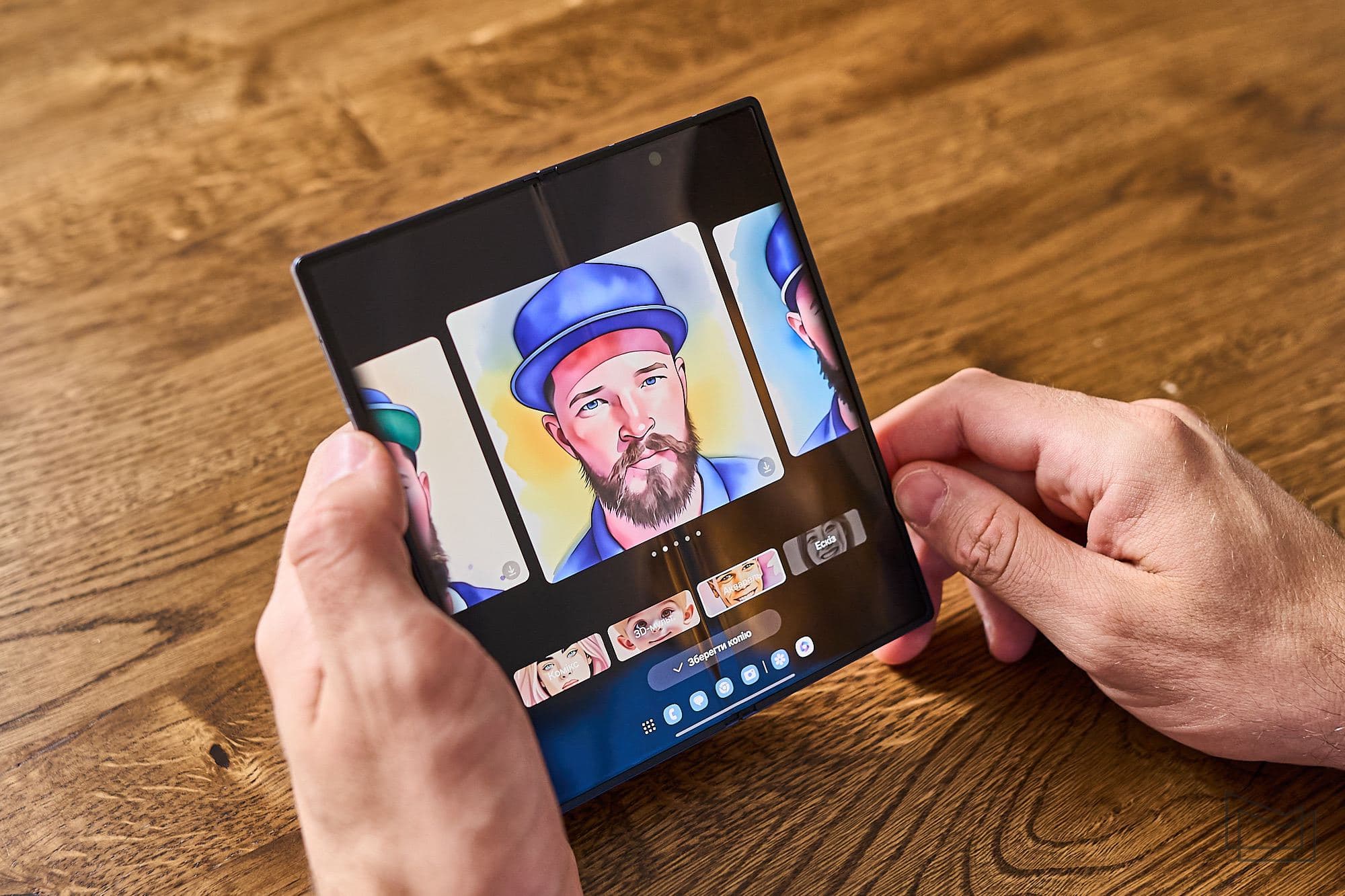Folding smartphones have a relatively short history, but they have already gone from openly experimental devices to mass-market models that are getting closer to monoblock versions in terms of size and weight. The new flagship Galaxy Fold6 smartphone from Samsung illustrates this trend well. And while last year I was thinking that the category of foldable devices has finally matured, this time we can safely say that it has normalized. What is so "normal" about Galaxy Fold6, and how this smartphone shows itself in everyday use, I will tell you in my experience of using it.
Galaxy Fold6 specifications
| Galaxy Fold6 | |
| Dimensions and weight | Folded dimensions: 153.5x68.1x12.1 mmThe unfolded dimensions are 153.5 x 132.6 x 5.6 mm239 grams |
| RAM and storage | 12 GB of RAM and 256, 512 GB or 1 TB of internal storage |
| Processor | Qualcomm Snapdragon 8 Gen 3 |
| Graphics processor | Adreno 750 |
| Wireless modules | Wi-Fi 6E, Bluetooth 5.3, NFC |
| Displays | External 6.3-inch Dynamic AMOLED 2X, 2376x968 dots, 1-120 Hz, 22.1:9, Corning Gorilla Glass Victus 2, 2600 nitsFlexible 7.6-inch Dynamic AMOLED 2X, 2176 x 1812 dots, 1-120 Hz, 2600 nits, with S Pen support |
| Main cameras | 50 megapixels wide-angle, f/1.8, Dual Pixel PDAF, optical stabilization;10 megapixel telephoto, f/2.4, PDAF, optical stabilization, 3x zoom;12 megapixel ultra-wide-angle, f/2.2, 120˚, PDAF, electronic stabilization. |
| Front cameras | 10 megapixels, f/2.24 megapixels, f/1.8 |
| Audio | Stereo speakers |
| Battery | 4400 mA-h |
| Charging | Wired up to 25 W, wireless up to 15 W, reversible up to 4.5 W |
| Connectors | USB Type-C 3.2 |
| Operating system | Android 14, One UI 6.1.1 |
| Recommended price | from 79 999 UAH |
Design and usability
Visually, it may seem that the updated Galaxy Fold6 is just another update to the design of Samsung's foldable smartphones. They reduced the bezels, reduced the thickness, made the edges a little flatter, and now the updated case is ready. But this is too simplistic, because in fact, the Galaxy Fold6 design is a change in the concept of how Samsung proposes to use its flagship foldable smartphone.
All previous generations of the Galaxy Fold line pursued the idea that the user gets a small external screen on which they can perform certain basic actions: receive a call, see notifications, check the weather, plot a route, reply to a short message. That's why the external displays of all Folds from the first to the fifth were narrow, designed to be used literally with one hand. After all, if you really need to pick up the device with both hands, you can open it up and start writing an email or surfing the web on the large display.
However, it is not always convenient to open a smartphone, and a large screen is not always necessary, so Galaxy Fold6 has a different concept - a compact smartphone for basic tasks that turns into a tablet if necessary. I am very impressed by this approach, because I, probably like many users, on the one hand, like to use large screens, but on the other hand, I would like to carry a compact smartphone with me.
Galaxy Fold6 copes with this task perfectly thanks to its compact size and, most importantly, lighter weight. When folded, the smartphone is smaller in height, slightly wider, and even thinner, with a thickness of 12.1 mm, which is closer to modern monoblock models.
These changes make Galaxy Fold6 more convenient for everyday use, and thanks to its 239 grams, the smartphone is more comfortable to hold and carry around.
The redesigned hinge allows the body halves to fit together even more closely, which enhances the feeling of holding a monoblock smartphone. At the same time, the hinge is still tight enough to fix the flexible screen in any position. Flatter edges allow you to open the case quite comfortably, while they are still slightly rounded at the edges and do not press into your hand.
Like the previous generation, the Galaxy Fold6 is waterproof and can survive immersion up to 1 meter for up to 30 minutes. In addition, this time Samsung decided to clarify that the smartphone is protected not only from water but also from dust. And if earlier the manufacturer wrote about the IPX8 protection level, now we have IP48, which means that in addition to water, particles 1 mm and larger cannot get into the case. Unfortunately, the standard IP68 level of protection for flagships cannot yet be implemented in folding devices due to the presence of a mechanical hinge.
As for the quality of the materials, the smartphone continues to use aircraft aluminum and Gorilla Glass Victus 2 for the display and the back when folded. Titanium and the newer Gorilla Glass Armor remains the advantage of models with the Ultra prefix. And if I can generally understand why aluminum was used in the Galaxy Fold6, after all, it is a lighter metal than titanium, then the lack of stronger glass with an anti-reflective coating in the more expensive model, in my opinion, is a flaw on Samsung's part.
The internal flexible screen of the smartphone is also covered with a protective film. After three weeks of careful use, I haven't noticed any scratches on it, but it's possible that they will appear over time. Over the past few years, Samsung has been working on strengthening the coating of the internal screen, but it still remains the weakest point of the design and requires careful use. Of course, it's not something you should be afraid to touch, but you shouldn't put sharp objects, coins, or keys on it.
If we talk about the design of Galaxy Fold6 in general, the change in the size and aspect ratio of the external screen, the smaller thickness and weight have definitely had a positive impact on the convenience of the smartphone. During the entire time I was using it, I kept thinking that this is probably one of the best relatively compact models today, because it can be turned into a tablet at any time.
Display, speed and battery life
The Galaxy Fold6's external Dynamic AMOLED 2X screen now has a 6.3-inch diagonal and 22.1:9 aspect ratio, in addition to a slightly higher resolution of 2376 x 968 pixels, a refresh rate of 1 to 120 Hz, and a much higher peak brightness of 2600 nits. Traditionally for Samsung, this is a very high-quality screen with excellent viewing angles and color reproduction.
Thanks to the slightly larger diagonal and different proportions of the external screen, I used it about 70% of the time. It is now much more comfortable to do basically everything you can do on Android, especially to use the virtual keyboard.
For documents, reading books, watching videos, playing games, there is an internal flexible 7.6-inch Dynamic AMOLED 2X display with a resolution of 2176 x 1812 dots, a refresh rate of 1 to 120 Hz, the same peak brightness of 2600 nits, and support for the optional S Pen. Unfortunately, I didn't have a chance to try it out, but for this generation of Fold, it's more compact and should be easier to carry around.
The large screen is great for both content consumption and work, making it easier to view email and edit documents, especially spreadsheets and presentations. The crease in the center of the display, which is typical for all foldable smartphones, has become smaller and less noticeable to the touch, but still noticeable at an angle. As before, this will not be a problem during use, because you stop noticing the crease almost immediately.
In terms of performance, the Galaxy Fold6 uses the top-of-the-line Qualcomm Snapdragon 8 Gen 3 processor with Adreno 750 graphics, slightly overclocked specifically for Samsung, 12 GB of RAM, and 256, 512 GB, or 1 TB of internal storage. Other features of the platform include Wi-Fi 6E, Bluetooth 5.3, NFC, and support for both two physical nanoSIMs and an eSIM.
It is expected that a top-of-the-line platform provides a high level of performance, both in everyday use and in games. It is worth noting that even despite its small thickness, which reaches only 5.6 mm when unfolded, the Galaxy Fold6 body heats up noticeably in the camera area under prolonged use, but not so much that it is uncomfortable to hold.
I don't think the main audience of foldable smartphones expects them to have gaming capabilities, but it's always been convenient to play on the internal screen of a Fold. Especially if you are fond of strategy or economic games.
Like last year, the Galaxy Fold6 has a 4400 mAh battery, which provides a little over a day of autonomy if not used in normal mode. In my case, the smartphone "survived" until 9 am the next day with 27-34% of the battery, with 6 hours of active screen. This is with the external screen used about 70% of the time, a browser, mail, instant messengers, social networks, and about an hour of navigation and music via wireless Android Auto. If you wish, you can extend the battery life to 8 or even 9 hours of active screen time, or, on the contrary, recharge the device in 4 hours. It all depends on how the device will be used.
Software and artificial intelligence
The smartphone runs on Android 14 with the proprietary One UI version 6.1.1, which has no major changes in the interface compared to One UI 6 and 6.1, but has added artificial intelligence capabilities.
For folding smartphones, especially the Fold series, the One UI is different from what users are used to seeing in monoblock models, in particular, the desktop and menu of the inner folding screen are completely independent of the outer one. This means that you can install other apps and widgets on it, taking advantage of the larger display.
Another useful feature in the layout is the bottom bar with quick access to the main menu, pinned apps, and the two apps that were opened last. It appears when you open an app and allows you to quickly switch between different apps, making multitasking easier.
Despite the ability to open two programs side by side or one above the other on the big screen, I didn't use it too often. Instead, it's the ability to quickly switch between programs via the bottom bar that greatly improves navigation. I should also note that quite a few applications are already optimized for the big screen, and their interface is not just scalable, but, for example, transforms from one to two columns, like in Gmail. This is very convenient and closer to what users are used to seeing on the desktop.
I'll talk more about the new AI features in One UI 6.1.1 later, but for now, I'll tell you what AI capabilities I've actually used in Samsung's shell.
First, it's the generative artificial intelligence integrated into the standard One UI keyboard that allows you to create message text. For example, if you're feeling creative and need to write a birthday greeting to a friend, or want to send a formal invitation to a meeting to your colleagues, but you're short on time. The AI in Samsung's keyboard really comes in handy for these tasks.
Another interesting artificial intelligence feature that I actively use is the ability to quickly summarize an article and understand its content integrated into the Samsung browser. It doesn't work perfectly, as AI is not yet smart enough to understand the entire content of the material and highlight the main points. Nevertheless, it is often enough to understand whether there is something really interesting in an article and whether it is worth spending your time reading it in full.
The Samsung Notes app also has a similar summarization function, and if you keep notes of a meeting or meeting in it, you can automatically format and shorten them.
As for the new AI features in One UI 6.1.1, some users may find real-time translation useful. It doesn't support Ukrainian yet, but if you know English, you can at least ask a native Korean, Arabic, Hindi, or other language speaker for directions.
Other new AI capabilities in Samsung's updated interface relate to image processing, so I'll talk about them in the context of using cameras.
Cameras and creative possibilities
The camera modules in the Galaxy Fold6 have not changed compared to its predecessor, so the user generally gets:
- 50-megapixel wide-angle camera, Dual Pixel AF, f/1.8, 1.0um pixel size, 85° viewing angle, optical stabilization;
- 12-megapixel ultra-wide-angle camera, f/2.2, 1.12um pixel size, 123° viewing angle, electronic stabilization;
- 10-megapixel telephoto camera, PDAF, optical stabilization, f/2.4, 1.0um pixel size, 3X optical zoom.
It also has two selfie cameras, one on the front and one on the back:
- 10-megapixel, f/2.2, pixel size 1.22um, viewing angle 85°;
- 4-megapixel, f/1.8, 2.0um pixel size, 85° viewing angle.
Of course, due to the transition of Galaxy Fold6 to a new processor and an updated operating system, the smartphone has a different so-called "image processing pipeline". This is the path that a photo takes from the moment light hits the sensor to viewing the image on the screen. These changes are generally cosmetic, but often improve photo quality in some scenarios.
Even though the Fold6 is inferior to the cameras of the Galaxy S24 Ultra, the smartphone demonstrates good image quality, which is enough for most users.
Here are some examples of photos with different lighting and videos.
But in fact, when we talk about photography on smartphones, we should equally mention the algorithms that, thanks to machine learning, are increasingly blurring the reality in our pictures. With One UI 6.1.1, Samsung has gone even further, and now every photo on the Galaxy Fold6 can be enhanced beyond just automatically editing colors, removing unnecessary objects, and straightening the horizon. Now you can literally "paint" your photos. To do this, simply open the gallery, click on the Galaxy AI button and select the "Sketch on Image" option, and then you can let your imagination run wild.
There was no tree in the background of our cameraman Volodymyr's photo, and now there is.
There are not many practical uses of AI in this context, but it is often just fun. You can draw a candy in the hands of a child and prove that he or she has already eaten sweets today. All the evidence is there.
The same goes for a new AI feature in the gallery called Portrait Studio. Any photo in which artificial intelligence algorithms detect a face can be turned into a portrait in one of four styles: comic book, 3D cartoon, watercolor, and sketch. This way, you can create unique avatars for yourself, for example. However, in my experience, this is a very good way to laugh in a company, as if a caricaturist is sitting with you and trying to transfer your character to a portrait.
In general, the capabilities of the Galaxy Fold6 cameras have not changed much, but the photo quality remains at a good level, plus the new AI creativity features provide interesting tools, at least for entertainment.
The external front-facing camera is also quite good for selfies and video calls.
However, I liked using the internal 4-megapixel camera to make calls, because the smartphone can be conveniently bent in half, turning one part of the body into a stand.
The secondary camera itself, even though it's hidden behind the pixels of the screen, is quite good for video chats. At least, it's definitely better than most laptops' webcams.
To summarize
After using the Galaxy Fold6 for a long time, I can say that the change in the format of Samsung's folding smartphone has only benefited it. The larger external screen allows you to comfortably use the device in a relatively compact format most of the time and get a large display when you need it. This has really undermined my love for monoblock design, and I can even imagine Fold6 foldable models replacing monoblocks in the future, just as touchscreen smartphones once replaced button smartphones. But this will require more time and a reduction in the cost of foldable smartphones.



















